Effect of Clinker Binder and Aggregates on Autogenous Healing in Post-Crack Flexural Behavior of Concrete Members
Abstract
1. Introduction
2. Experimental Methods
2.1. Material Test of Mortar
2.2. Material Test of Concrete
2.3. Test for Fexural Behavior
2.3.1. Test Variables
- V_28D series for the members at 28 days loaded until the ultimate state;
- PLRL_28D series for the members pre-loaded up to 50% of the ultimate load at 28 days followed by loading until the ultimate state;
- RL_28 + 90D series for the members pre-loaded up to 50% of the ultimate load at 28 days, followed by 90 days of water curing prior to loading until the ultimate state;
- V_28 + 90D series for the members loaded up to the ultimate load after 28 days and after 28 + 90 days.
2.3.2. Fabrication of Test Members and Test Setup
3. Test Results
3.1. Material Test Results
3.2. Flexural Test Results
3.2.1. Crack, Yield, Ultimate Loads and Failure Pattern
3.2.2. Load-Deflection Relations
3.2.3. Load–Rebar Strain Relations
3.2.4. Load–Concrete Strain Relations
3.2.5. Crack Patterns
4. Discussion of Results
4.1. Visual Observation of Crack Healing Effect
4.2. Evaluation of Crack Healing Effect by Water Flow Test
4.3. Evaluation of Crack Healing Effect on Mechanical Performance
4.3.1. Yield and Ultimate Loads
4.3.2. Energy Absorption Capacity and Ductility Index
5. Conclusions
- The utilization of mineral admixtures was seen to improve the self-healing performance of mortar. Especially, healing ratios of 100% for crack widths smaller than 200 μm and 85% to 90% for crack widths of 250 μm were observed according to the admixing of clinker binder and aggregates. All the considered mixes exhibited similar results in terms of the compressive strength, elastic modulus and flexural strength. The series with a relatively meaningful binder replacement ratio by 0.85-mm clinker exhibited the best physical properties.
- A negligible difference was observed in the crack, yield and ultimate loads. Failure occurred through flexure with a similar number of vertical cracks. All the test members showed linear load-deflection relationship until the initiation of cracks followed by a nonlinear increase in the deflection beyond the crack initiation and the load continued to increase until the ultimate load. For the test members cured additionally for 90 days after 28 days, the ultimate deflection reached more than 100% of that of the members loaded after 28 days of curing due to the plastic deformation caused by the yield of the rebar and the aging.
- Rebar strain practically did not occur prior to the initiation of cracks and grew linearly after cracking to experience a large increase after yielding. The ultimate concrete strain in the members loaded up to the ultimate load at 28 days reached 0.0030 but that in the members that were additionally cured for 90 days after 28 days reached 0.0040 due to the aging and the effect of residual deformation.
- The maximum crack width observed after 90 days of additional curing ranged between 0.019 and 0.053 mm. These values can be attributed to various factors like crack closure following the removal of loading as well as crack healing. The enlarged images of the cracks revealed that the 0.85-series members replacing binder by 100% of clinker achieved the best crack healing performance. The 2.5-series members replacing each binder and aggregates by 50% of clinker exhibited crack healing performance in-between that of the P-series members without clinker and that of the 0.85-series members. This observation was confirmed by the results of the water flow test performed on the test members.
- In terms of mechanical performance, the crack healing property of concrete increased, to some extent, the rebar yield load, the members’ ultimate load and energy absorption capacity and ductility index. However, this effect appeared to be minimal when considering the increase in the energy absorption capacity brought by the age and the larger displacement sustained during reloading caused by the plastic deformation induced by pre-damage.
- An attempt to objectively quantify the crack healing effect by measuring the crack distribution density from the observed crack patterns was performed and this confirmed the crack healing effect provided by clinker powder.
- Finally, the fine grain size of clinker made it possible to replace fine aggregates and the longer healing time increased the crack healing effect.
Author Contributions
Funding
Conflicts of Interest
References
- James, A.; Bazarchi, E.; Chiniforush, A.A.; Aghdam, P.P.; Hosseini, M.R.; Akbarnezhad, A.; Martek, I.; Ghodoosi, F. Rebar corrosion detection, protection, and rehabilitation of reinforced concrete structures in coastal environments: A review. Constr. Build. Mater. 2019, 224, 1026–1039. [Google Scholar] [CrossRef]
- Van Tittelboom, K.; De Belie, N. Self-healing of cementitious materials—A review. Materials 2013, 6, 2182–2217. [Google Scholar] [CrossRef]
- Wang, W.; Zhang, T.; Wang, X.; He, Z. Research status of self-healing concrete. Earth Environ. Sci. 2019, 218, 012037. [Google Scholar] [CrossRef]
- Rajczakowska, M.; Habermehl-Cwirzen, K.; Hedlund, H.; Cwirzen, A. Autogenous self-healing: A better solution for concrete. J. Mater. Civ. Eng. 2019, 31, 03119001. [Google Scholar] [CrossRef]
- Zhang, W.; Zheng, Q.; Ashour, A.; Han, B. Self-healing cement concrete for resilient infrastructures: A review. Compos. Part B 2020, 189, 107892. [Google Scholar] [CrossRef]
- Camara, L.A.; Wons, M.; Esteves, I.C.A.; Medeiros-Junior, R.A. Monitoring the self-healing of concrete from the ultrasonic pulse velocity. J. Compos. Sci. 2019, 3, 16. [Google Scholar] [CrossRef]
- Wang, X.; Fang, C.; Li, D.; Han, N.; Xing, F. A self-healing cementitious composite with mineral admixtures and built-in carbonate. Cem. Concr. Comp. 2018, 92, 216–229. [Google Scholar] [CrossRef]
- Park, B.; Choi, Y.C. Investigating a new method to assess the self-healing performance of hardened cement pastes containing supplementary cementitious materials and crystalline admixtures. J. Mater. Res. Technol. 2019, 8, 6058–6073. [Google Scholar] [CrossRef]
- Lee, M.W. Prospects and future directions of self-healing fiber-reinforced composite materials. Polymers 2020, 12, 379. [Google Scholar] [CrossRef]
- Kim, S.; Yoo, D.Y.; Kim, M.J.; Banthia, N. Self-healing capability of ultra-high-performance fiber-reinforced concrete after exposure to cryogenic temperature. Cem. Concr. Comp. 2019, 104, 103335. [Google Scholar] [CrossRef]
- Wang, J.; Ding, S.; Han, B.; Ni, Y.; Ou, J. Self-healing properties of reactive powder concrete with nanofillers. Smart Mater. Struct. 2018, 27, 115033. [Google Scholar] [CrossRef]
- Escoffres, P.; Desmettre, C.; Charron, J.P. Effect of a crystalline admixture on the self-healing capability of high-performance fiber reinforced concretes in service conditions. Constr. Build. Mater. 2018, 173, 763–774. [Google Scholar] [CrossRef]
- Kua, H.W.; Gupta, S.; Aday, A.N.; Srubar, W.V., III. Biochar-immobilized bacteria and superabsorbent polymers enable self-healing of fiber-reinforced concrete after multiple damage cycles. Cem. Concr. Compos. 2019, 100, 35–52. [Google Scholar] [CrossRef]
- Xu, J.; Yao, W. Multiscale mechanical quantification of self-healing concrete incorporating non-ureolytic bacteria-based healing agent. Cem. Concr. Res. 2014, 64, 1–10. [Google Scholar] [CrossRef]
- Zhang, Z.; Zhang, Q.; Li, V.C. Multiple-scale investigations on self-healing induced mechanical property recovery of ECC. Cem. Concr. Compos. 2019, 103, 293–302. [Google Scholar] [CrossRef]
- Deng, H.; Liao, G. Assessment of influence of self-healing behavior on water permeability and mechanical performance of ECC incorporating superabsorbent polymer (SAP) particles. Constr. Build. Mater. 2018, 170, 455–465. [Google Scholar] [CrossRef]
- Xue, C.; Li, W.; Li, J.; Tam, V.W.Y.; Ye, G. A review study on encapsulation-based self-healing for cementitious material. Struct. Concr. 2019, 20, 198–212. [Google Scholar] [CrossRef]
- Gupta, S.; Pang, S.D.; Kua, H.W. Autonomous healing in concrete by bio-based healing agents—A review. Constr. Build. Mater. 2017, 146, 419–428. [Google Scholar] [CrossRef]
- Park, B.; Choi, Y.C. Self-healing capability of cementitious materials with crystalline admixtures and super absorbent polymers (SAPs). Constr. Build. Mater. 2018, 189, 1054–1066. [Google Scholar] [CrossRef]
- Hong, G.; Song, C.; Park, J.; Choi, S. Hysteretic behavior of rapid self-sealing of cracks in cementitious materials incorporating superabsorbent polymers. Constr. Build. Mater. 2019, 195, 187–197. [Google Scholar] [CrossRef]
- Lv, L.; Guo, P.; Liu, G.; Han, N.; Xing, F. Light induced self-healing in concrete using novel cementitious capsules containing UV curable adhesive. Cem. Concr. Compos. 2020, 105, 103445. [Google Scholar] [CrossRef]
- Qureshi, T.S.; Kanellopoulos, A.; Al-Tabbaa, A. Encapsulation of expansive powder minerals within a concentric glass capsule system for self-healing concrete. Constr. Build. Mater. 2016, 121, 629–643. [Google Scholar] [CrossRef]
- Gilabert, F.A.; Van Tittelboom, K.; Van Stappen, J.; Cnudde, V.; De Belie, N.; Van Paepegem, W. Integral procedure to assess crack filling and mechanical contribution of polymer-based healing agent in encapsulation-based self-healing concrete. Cem. Concr. Compos. 2017, 77, 68–80. [Google Scholar] [CrossRef]
- Snoeck, D.; Pel, L.; De Belie, N. Autogenous healing in cementitious materials with superabsorbent polymers quantified by means of NMR. Sci. Rep. 2020, 10, 642. [Google Scholar] [CrossRef] [PubMed]
- Park, B.; Choi, Y.C. Quantitative evaluation of crack self-healing in cement-based materials by absorption test. Constr. Build. Mater. 2018, 184, 1–10. [Google Scholar] [CrossRef]
- Azarsa, P.; Gupta, R.; Biparva, A. Assessment of self-healing and durability parameters of concretes incorporating crystalline admixtures and Portland Limestone Cement. Cem. Concr. Compos. 2019, 99, 17–31. [Google Scholar] [CrossRef]
- Guo, S.; Chidiac, S. Self-healing concrete: A critical review. In Proceedings of the 2019 CSCE Annual Conference, Laval, QC, Canada, 12–15 June 2019. [Google Scholar]
- Choi, Y.C.; Park, B. Enhanced autogenous healing of ground granulated blast furnace slag blended cements and mortars. J. Mater. Res. Technol. 2019, 8, 3443–3452. [Google Scholar] [CrossRef]
- Takagi, E.M.; Lima, M.G.; Helene, P.; Meideros-Junior, R.A. Self-healing of self-compacting concretes made with blast furnace slag cements activated by crystalline admixture. Int. J. Mater. Prod. Tec. 2018, 56, 169–186. [Google Scholar] [CrossRef]
- Yuan, L.; Chen, S.; Wang, S.; Huang, Y.; Yang, Q.; Liu, S.; Wang, J.; Du, P.; Cheng, X.; Zhou, Z. Research on the improvement of concrete self-healing based on the regulation of cement particle size distribution (PSD). Materials 2019, 12, 2818. [Google Scholar] [CrossRef]
- Berger, R.L. Properties of concrete with cement clinker aggregate. Cem. Concr. Res. 1974, 4, 99–112. [Google Scholar] [CrossRef]
- Allahverdi, J.S.A. Using PC clinker as aggregate-enhancing concrete properties by improving ITZ microstructure. Mag. Concr. Res. 2020, 72, 173–181. [Google Scholar] [CrossRef]
- Choi, S.W.; Bae, W.H.; Lee, K.M.; Shin, K.J. Correlation between crack width and water flow of cracked mortar specimens measured by constant water head permeability test. J. Korea Concr. Inst. 2017, 29, 267–273. [Google Scholar] [CrossRef]
- Lepech, M.D.; Li, V.C. Water permeability of engineered cementitious composites. Cem. Concr. Compos. 2009, 31, 744–753. [Google Scholar] [CrossRef]
- Alyousif, A. Self-Healing Capability of Engineered Cementitious Composites Incorporating Different Types of Pozzolanic Materials. Ph.D. Thesis, Ryerson University, Toronto, ON, Canada, 2016. [Google Scholar]
- Sunayana, S.; Barai, S.V. Flexural performance and tension-stiffening evaluation of reinforced concrete beam incorporating recycled aggregate and fly ash. Constr. Build. Mater. 2018, 174, 210–223. [Google Scholar] [CrossRef]
- Sturm, A.B.; Visintin, P.; Oehlers, D.J. Time dependent serviceability behavior of reinforced concrete beam: Partial interaction tension stiffening mechanics. Struct. Concr. 2018, 19, 508–523. [Google Scholar] [CrossRef]
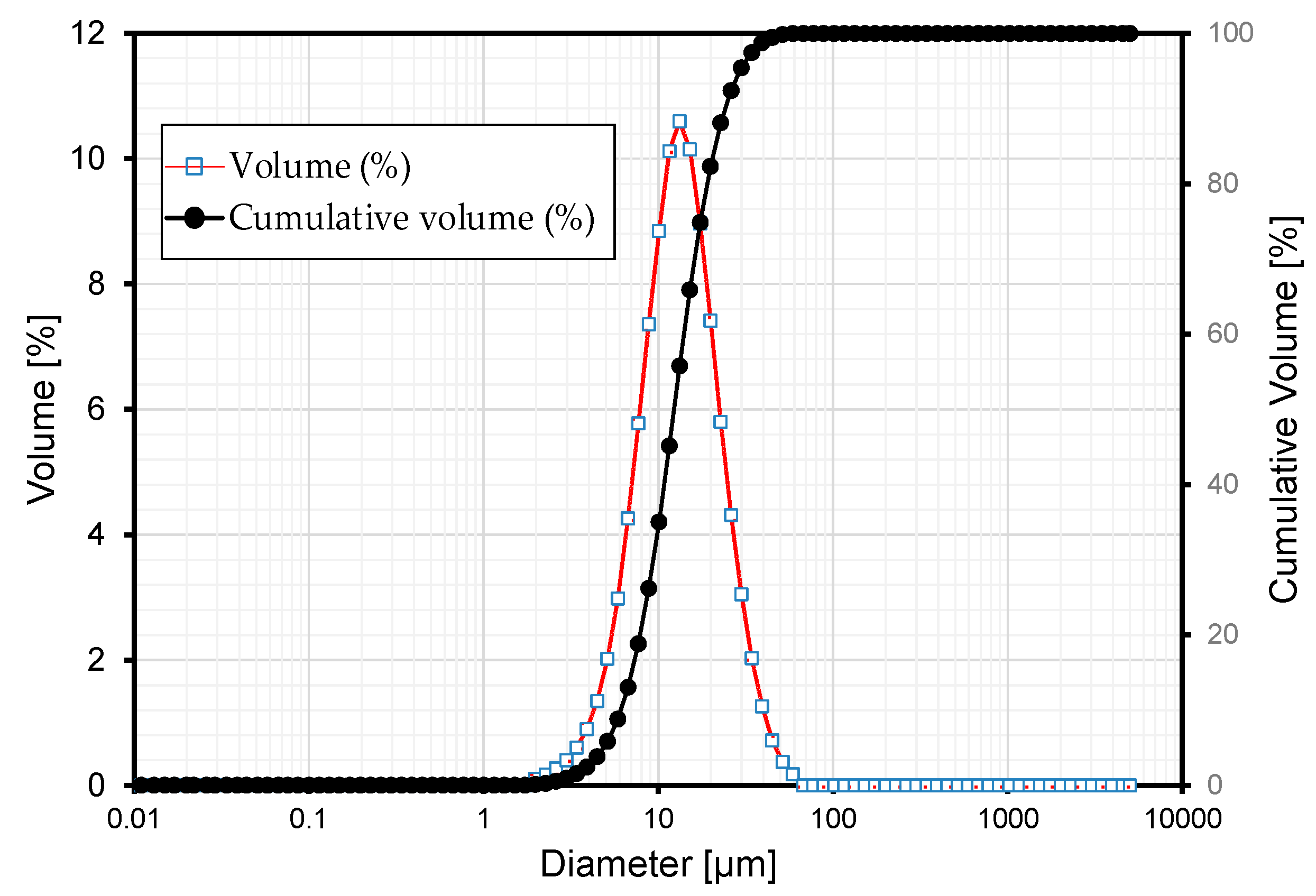
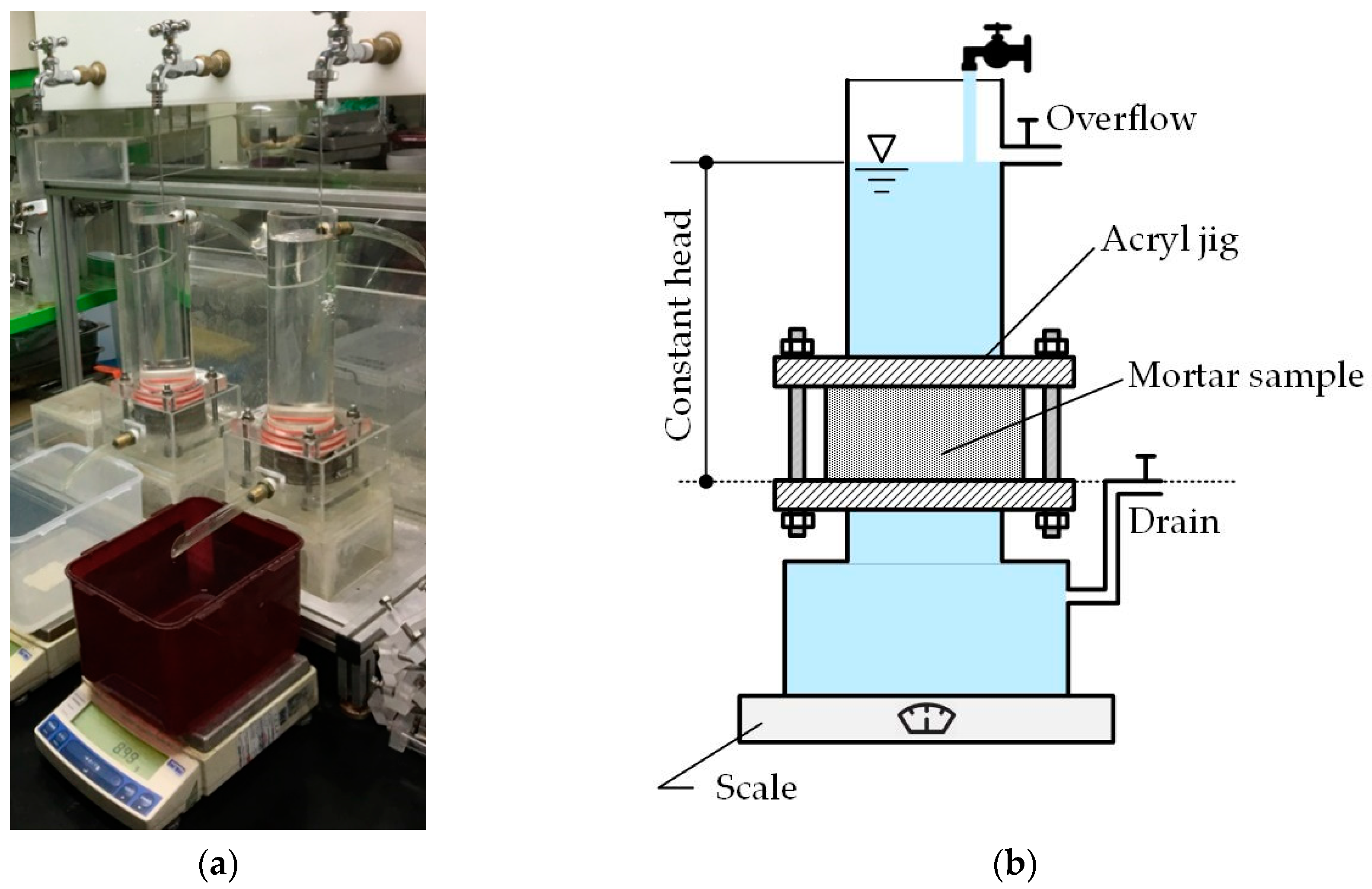


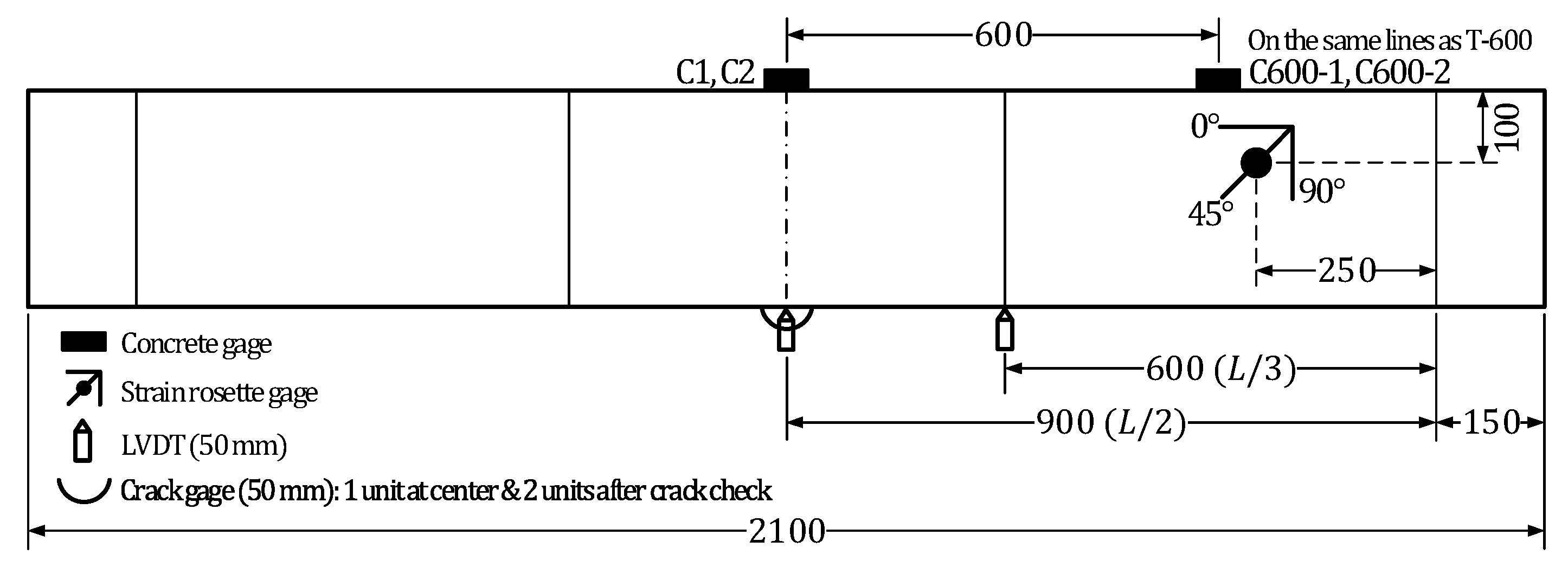
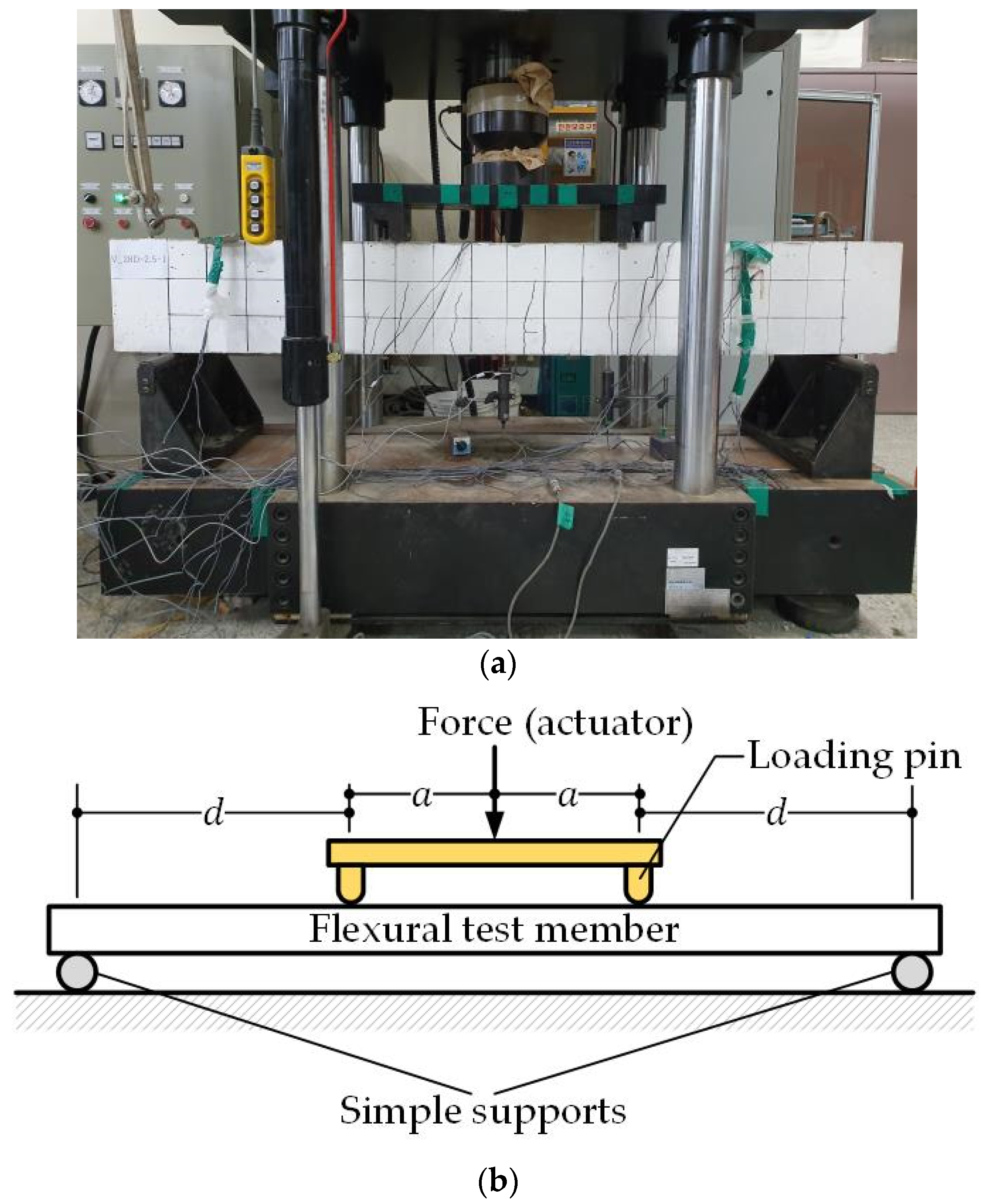
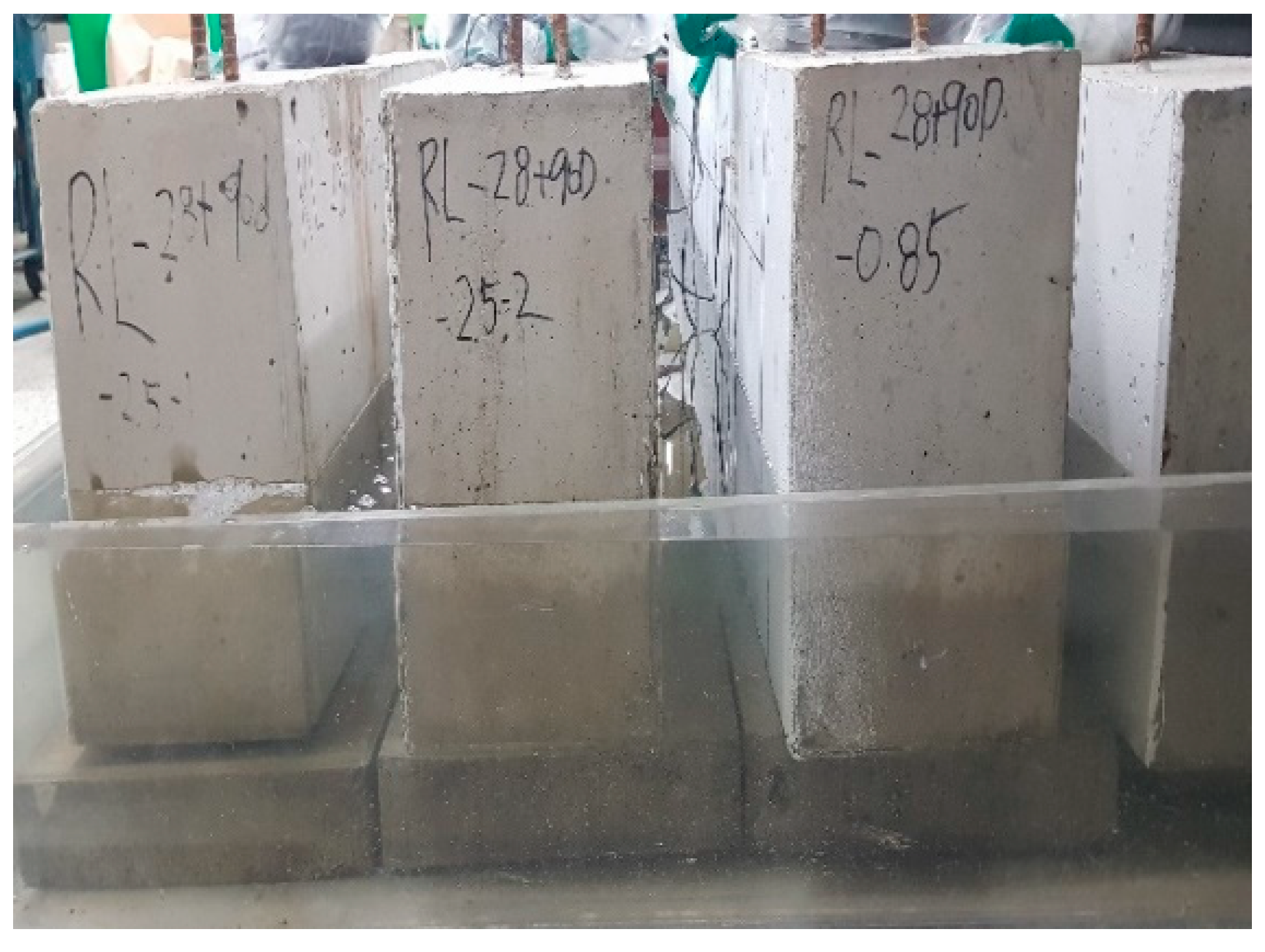
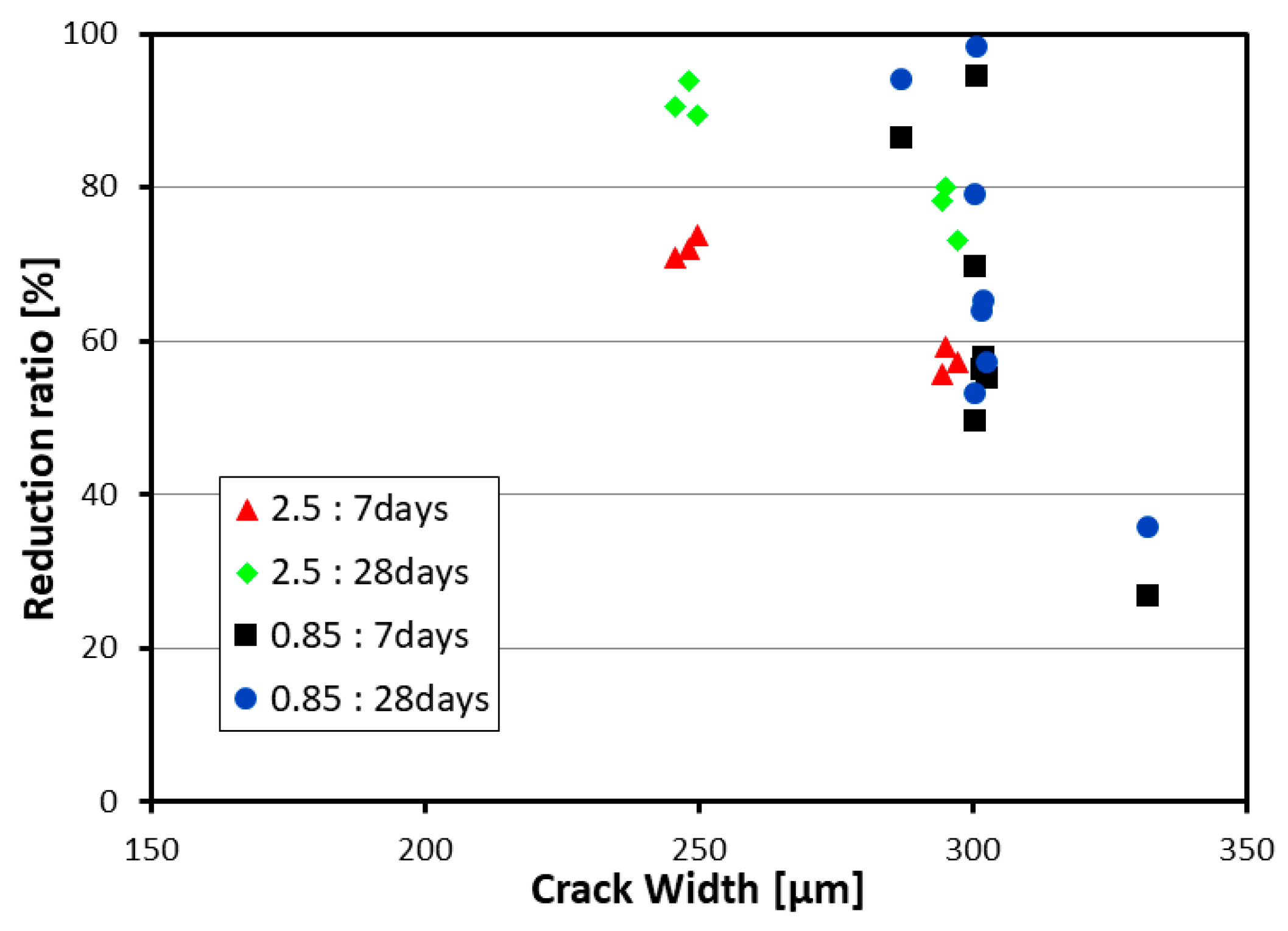

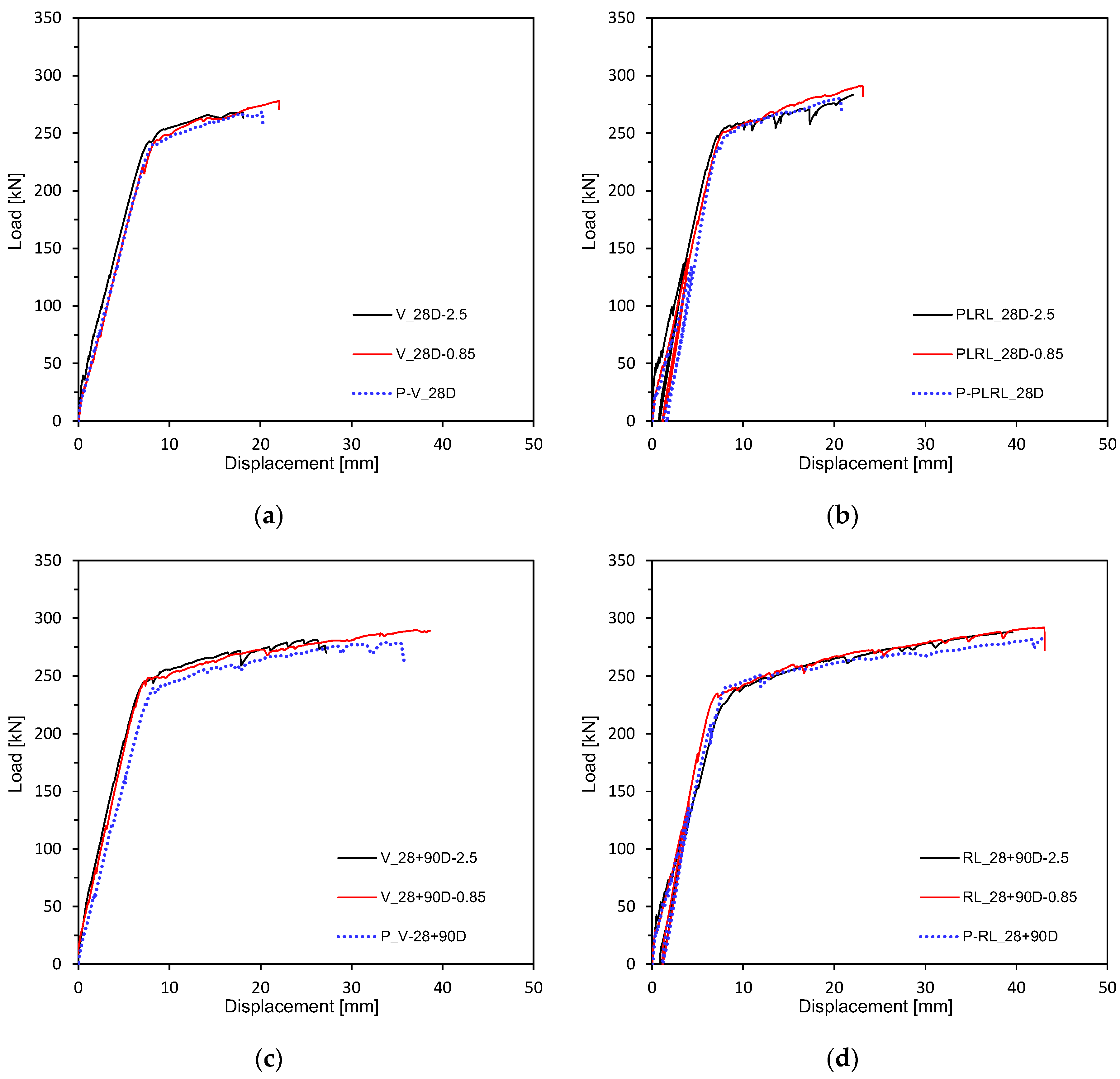

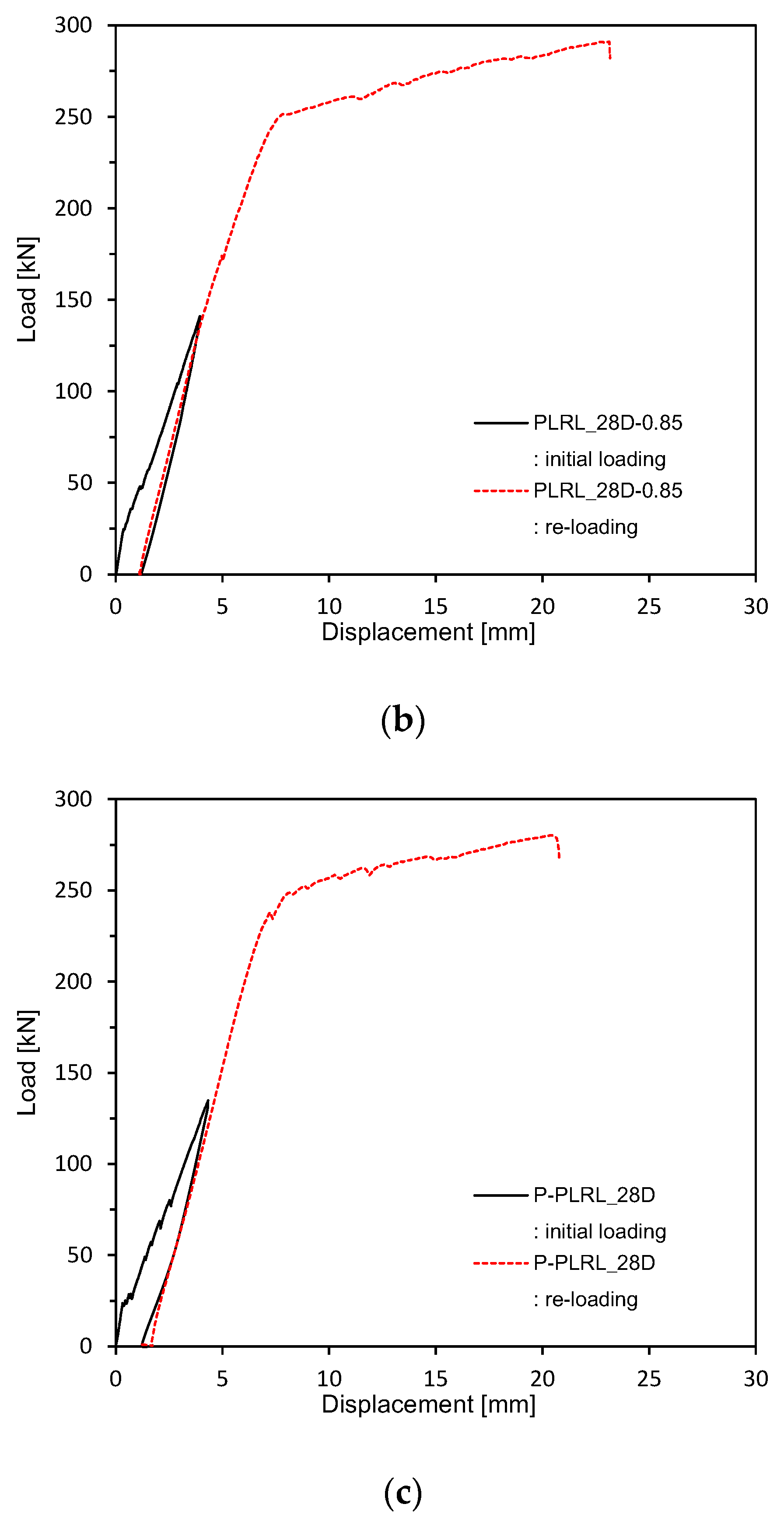

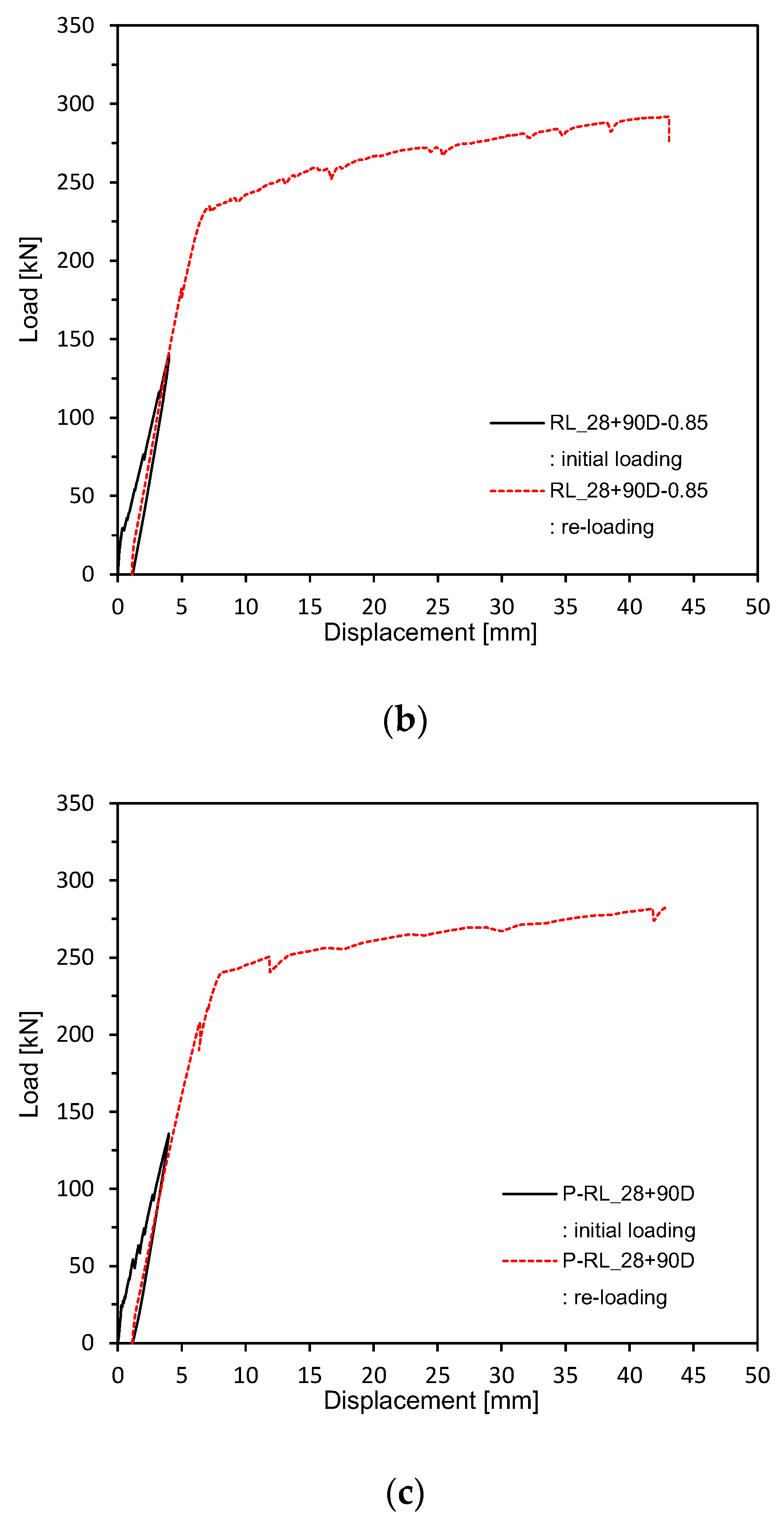
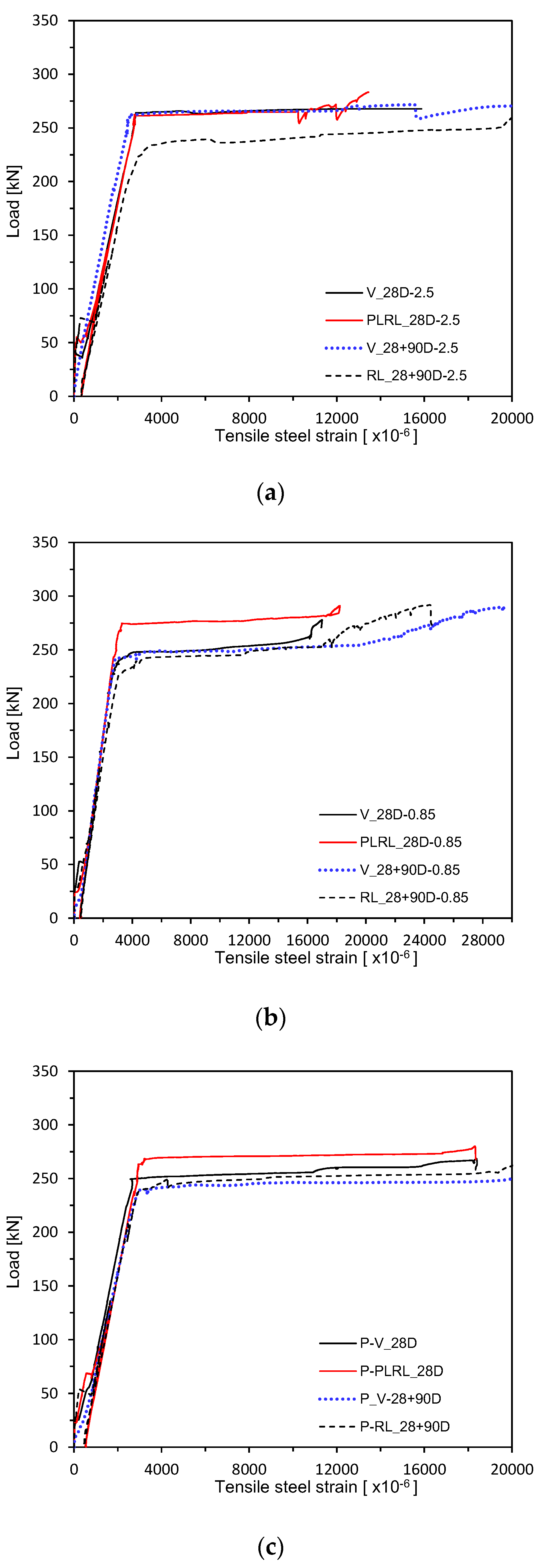
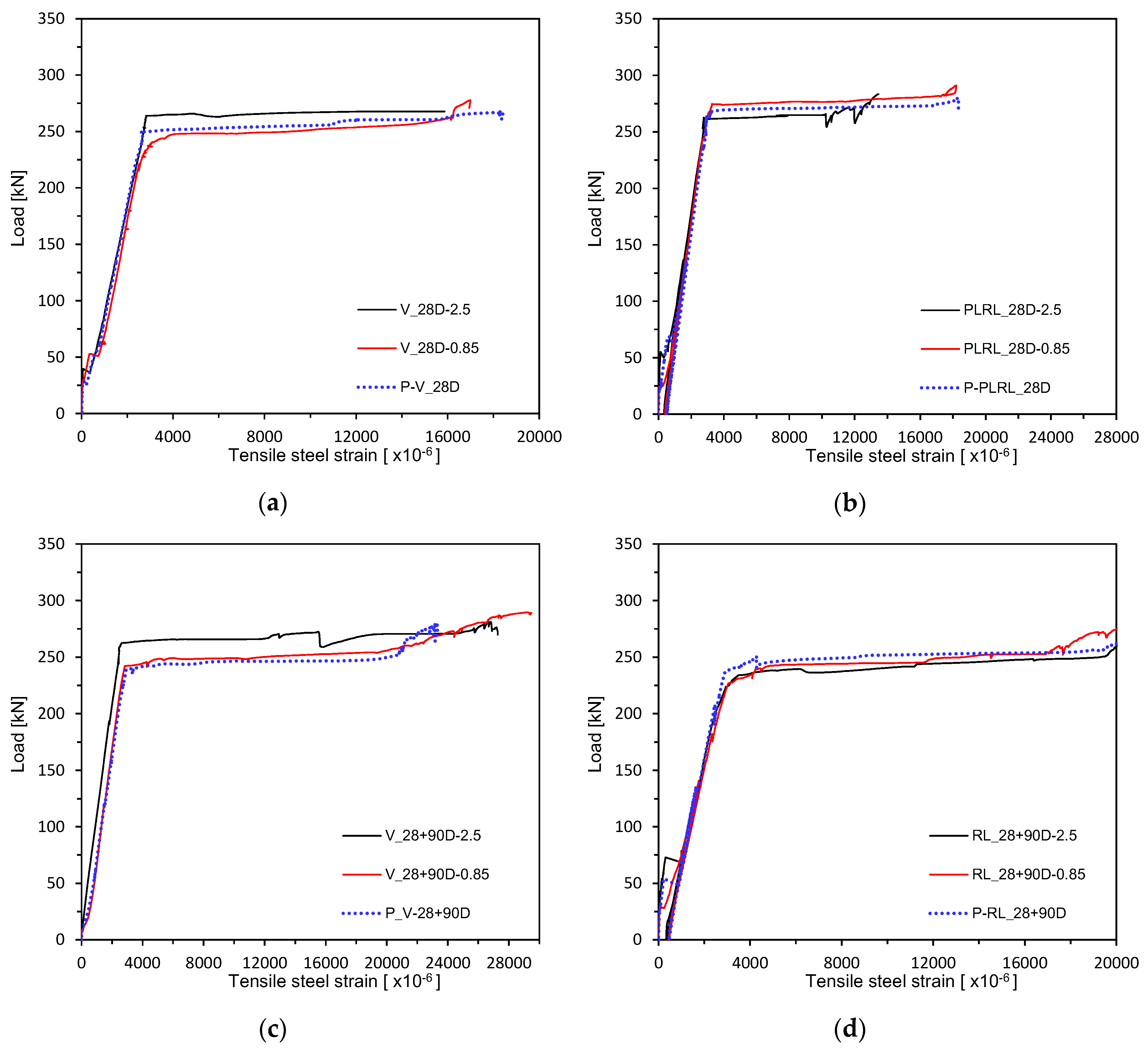
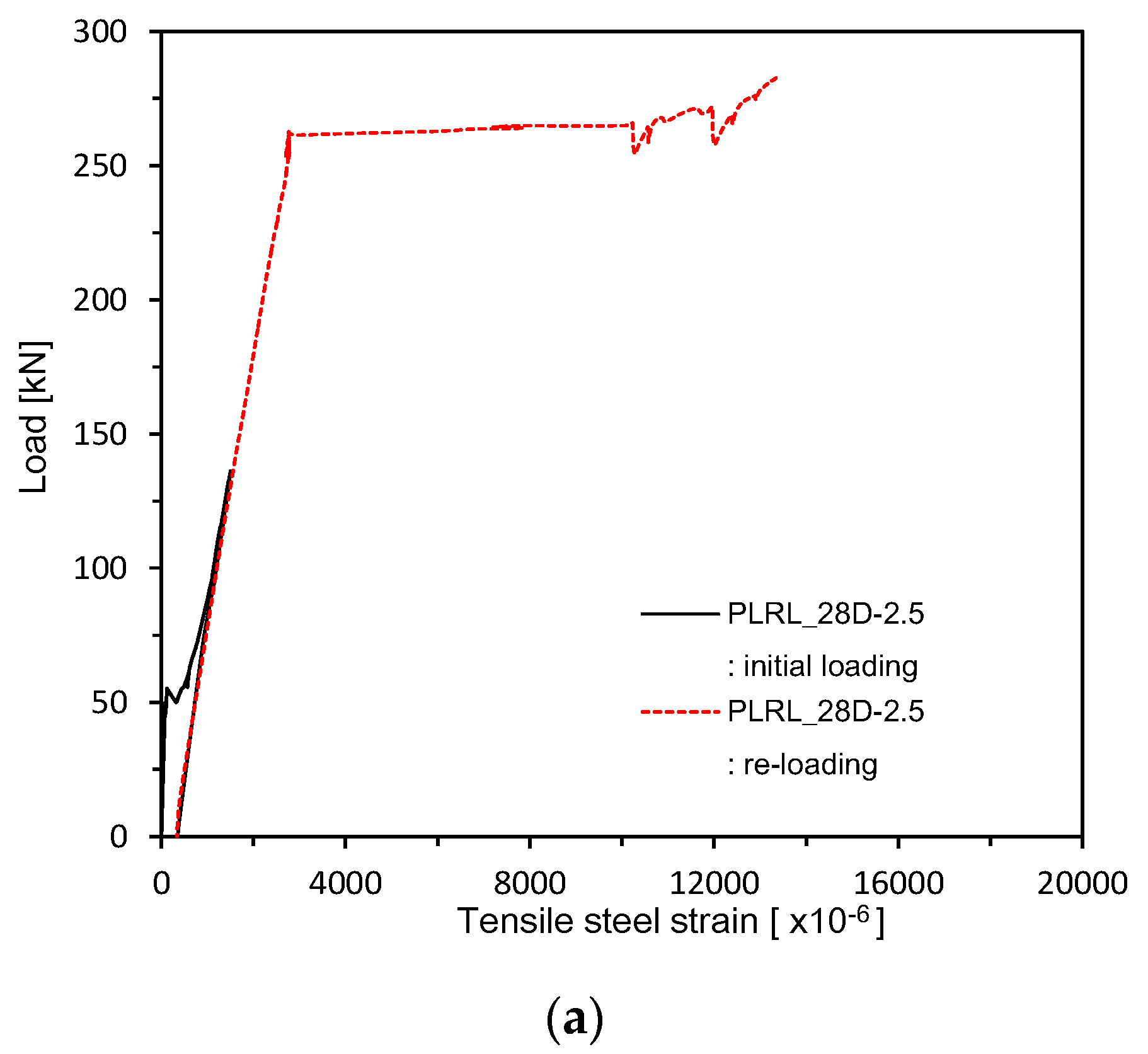
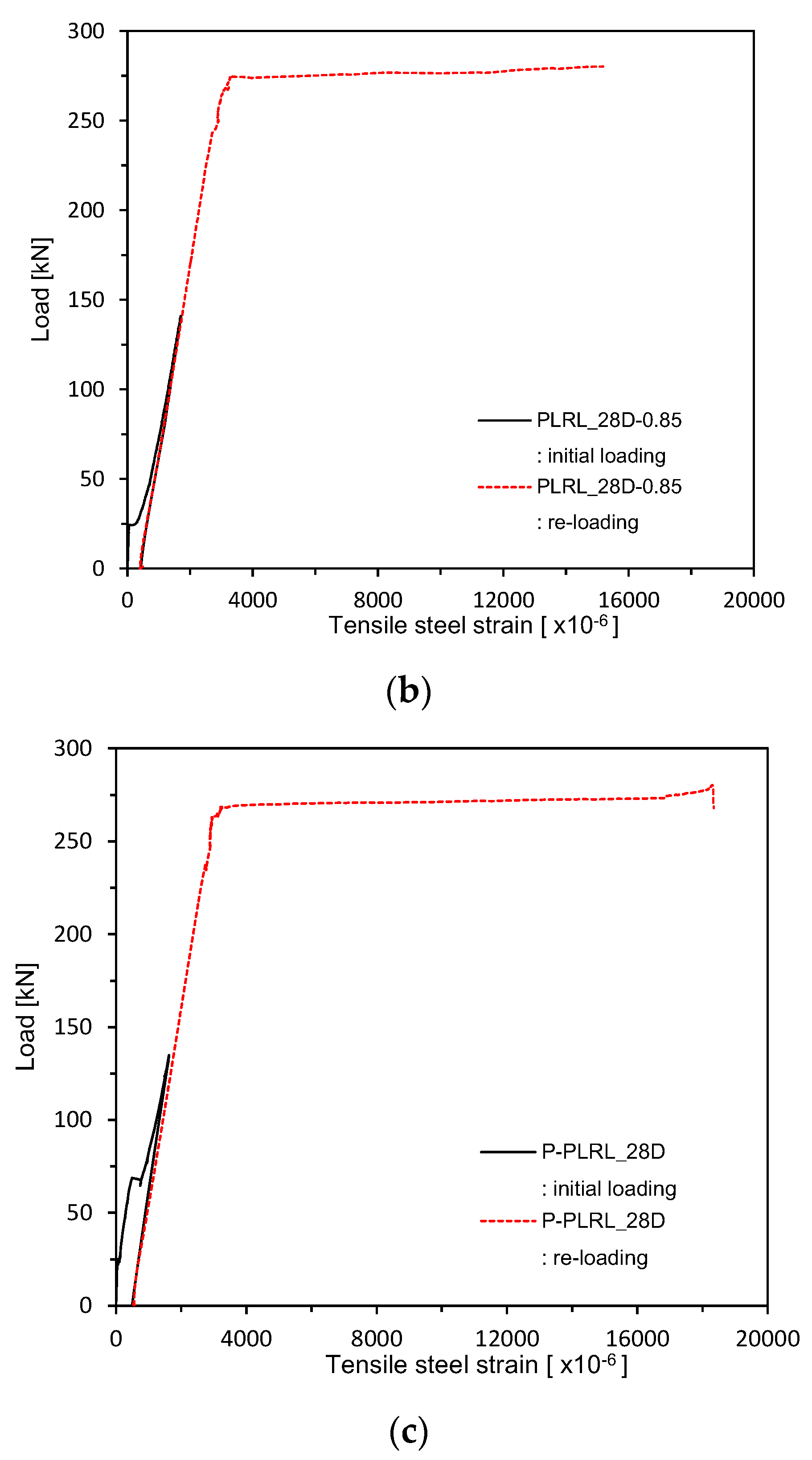
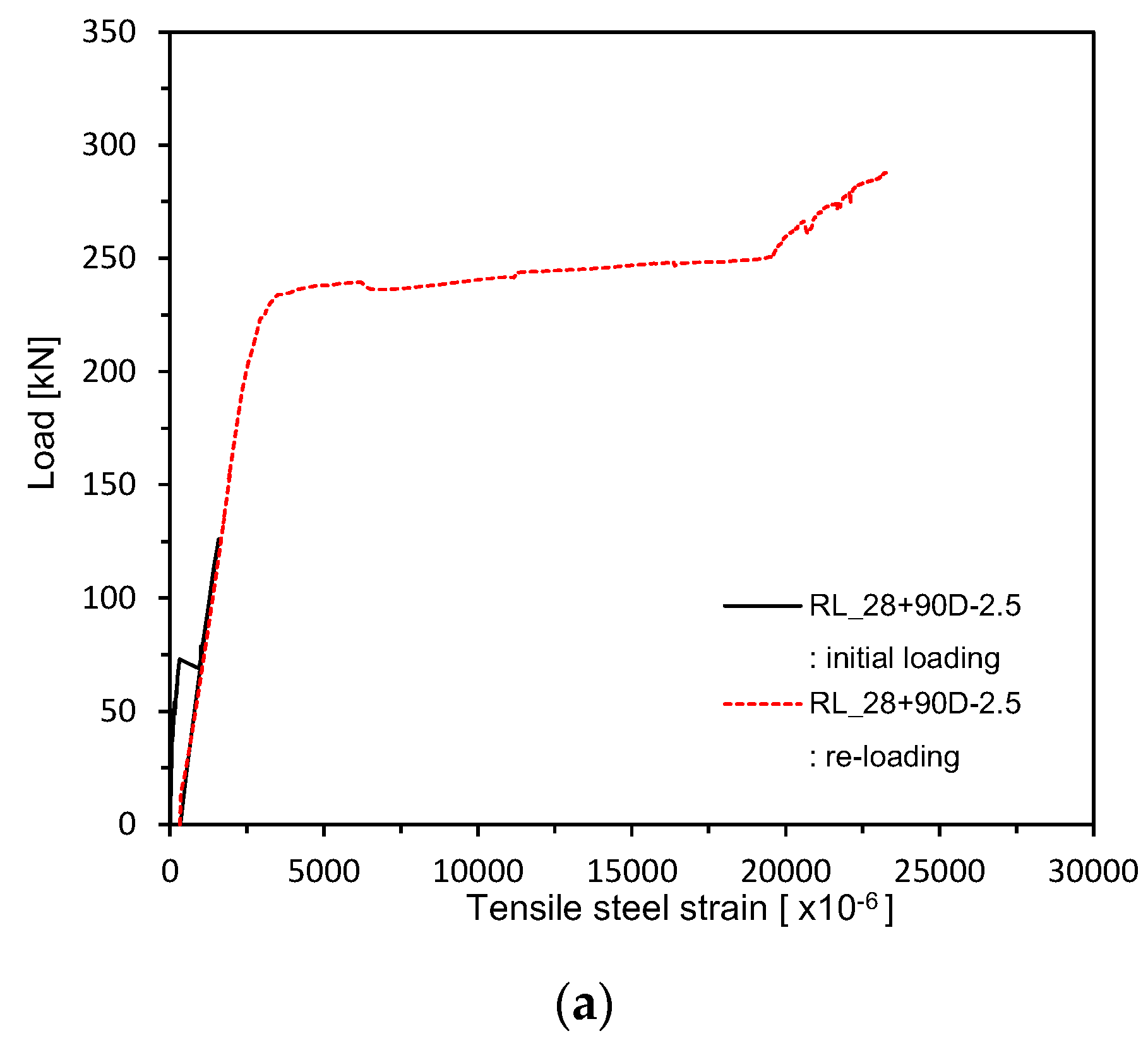
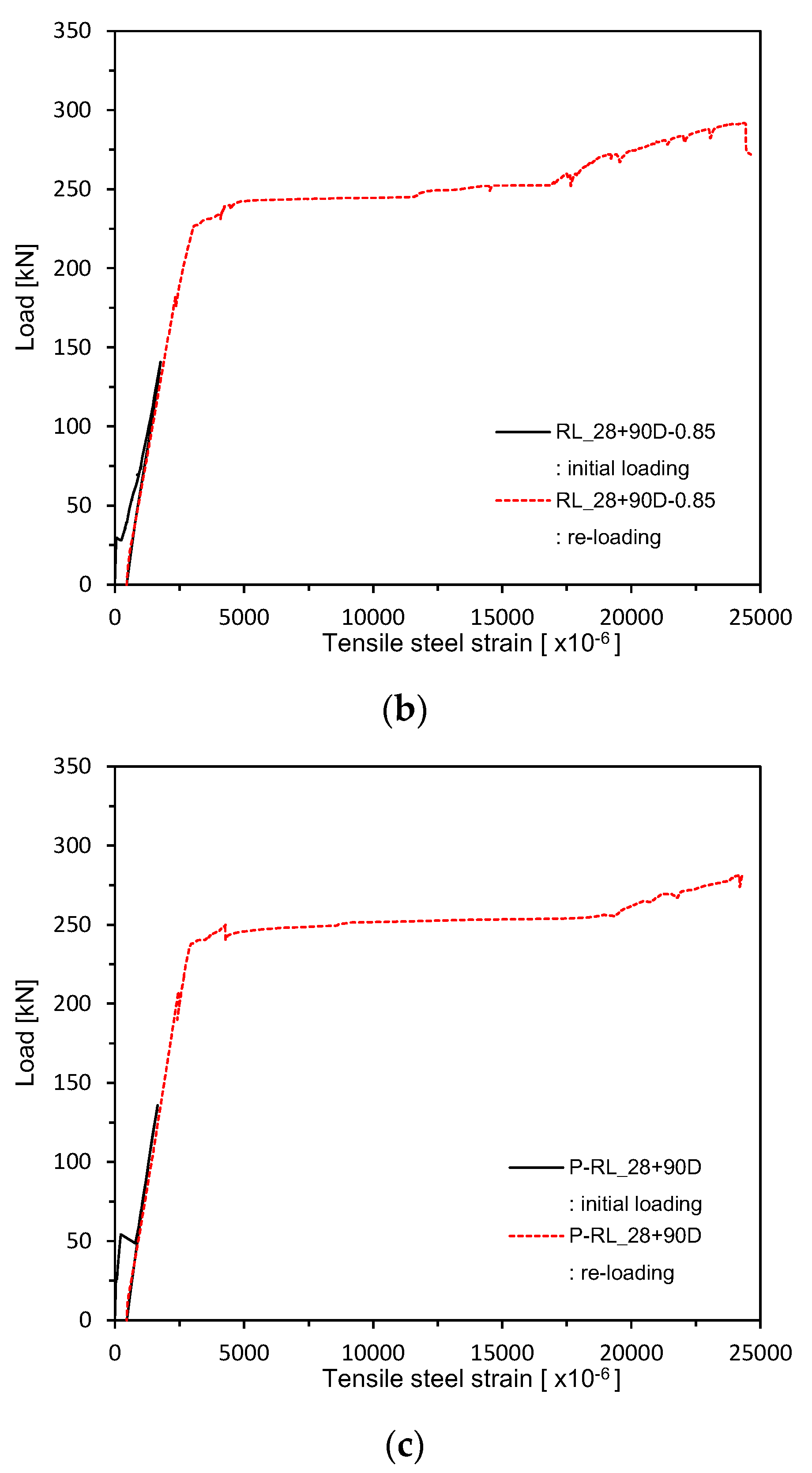
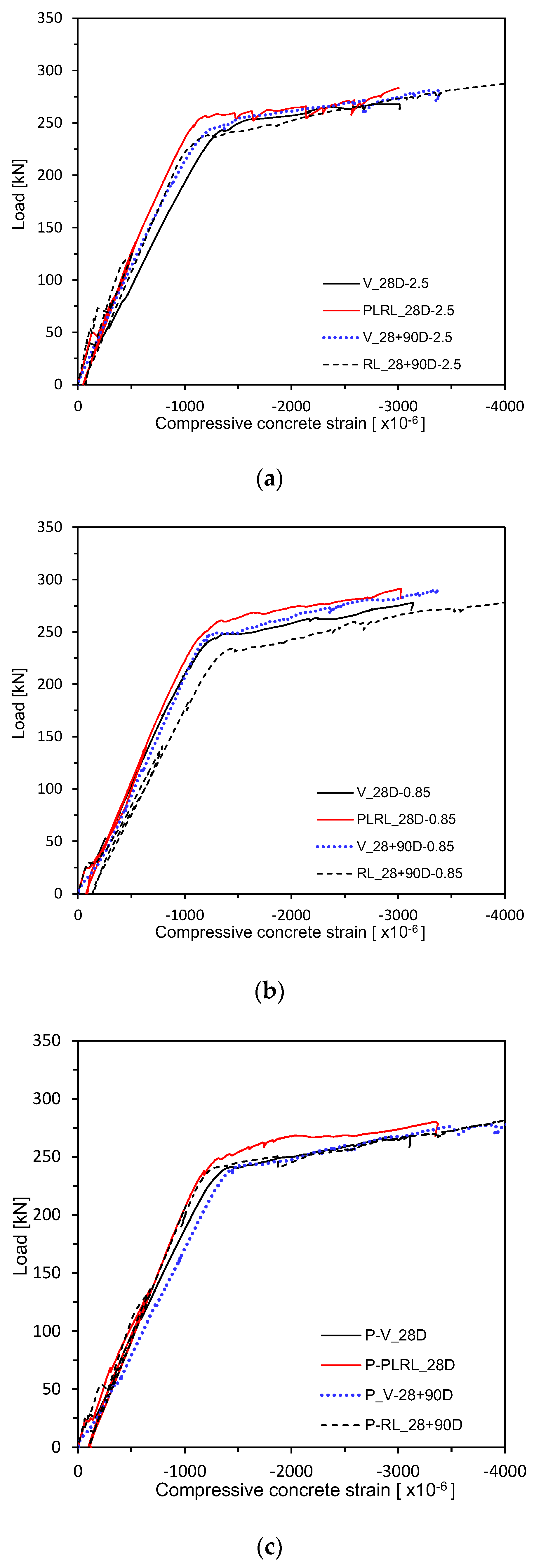
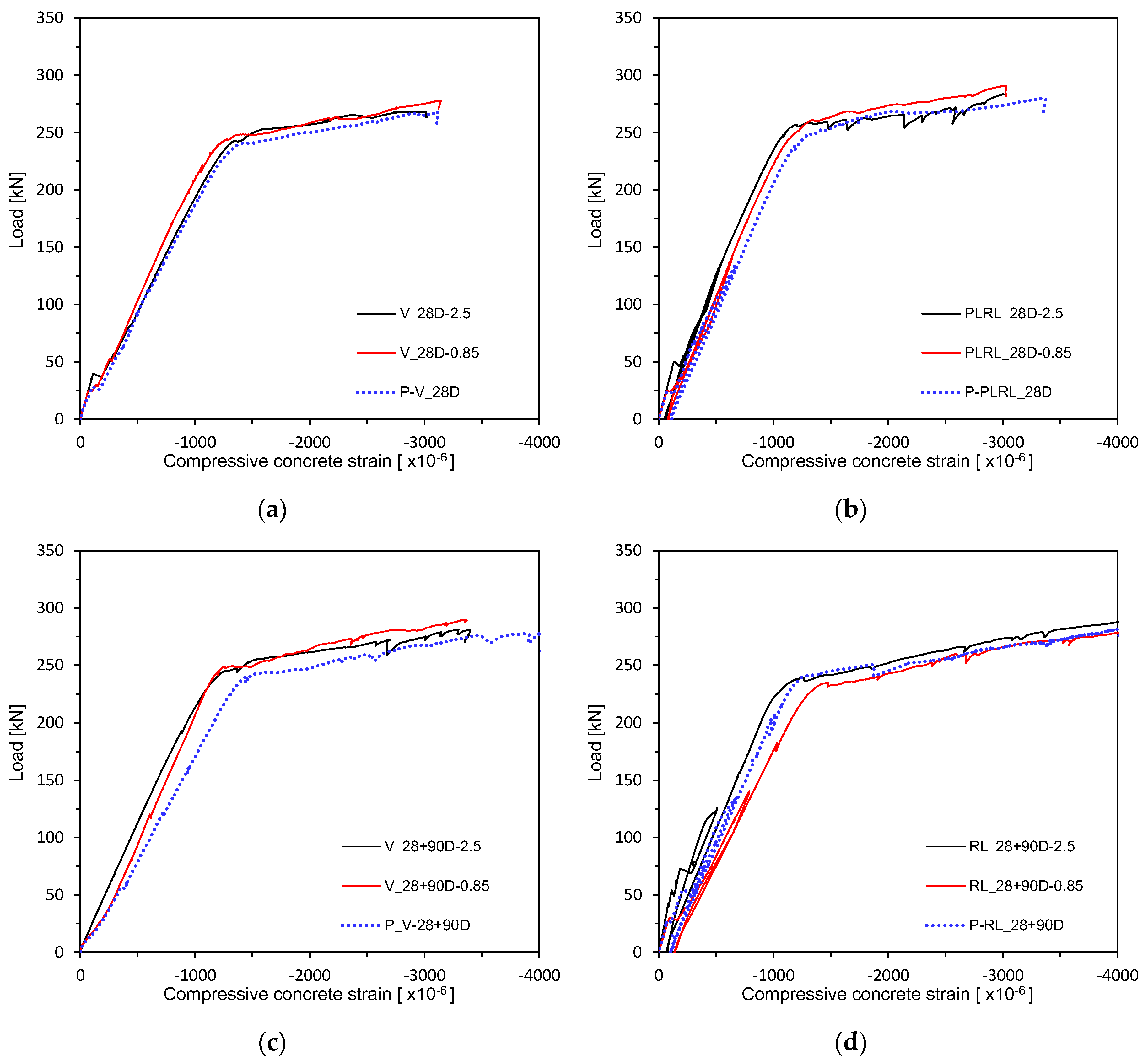

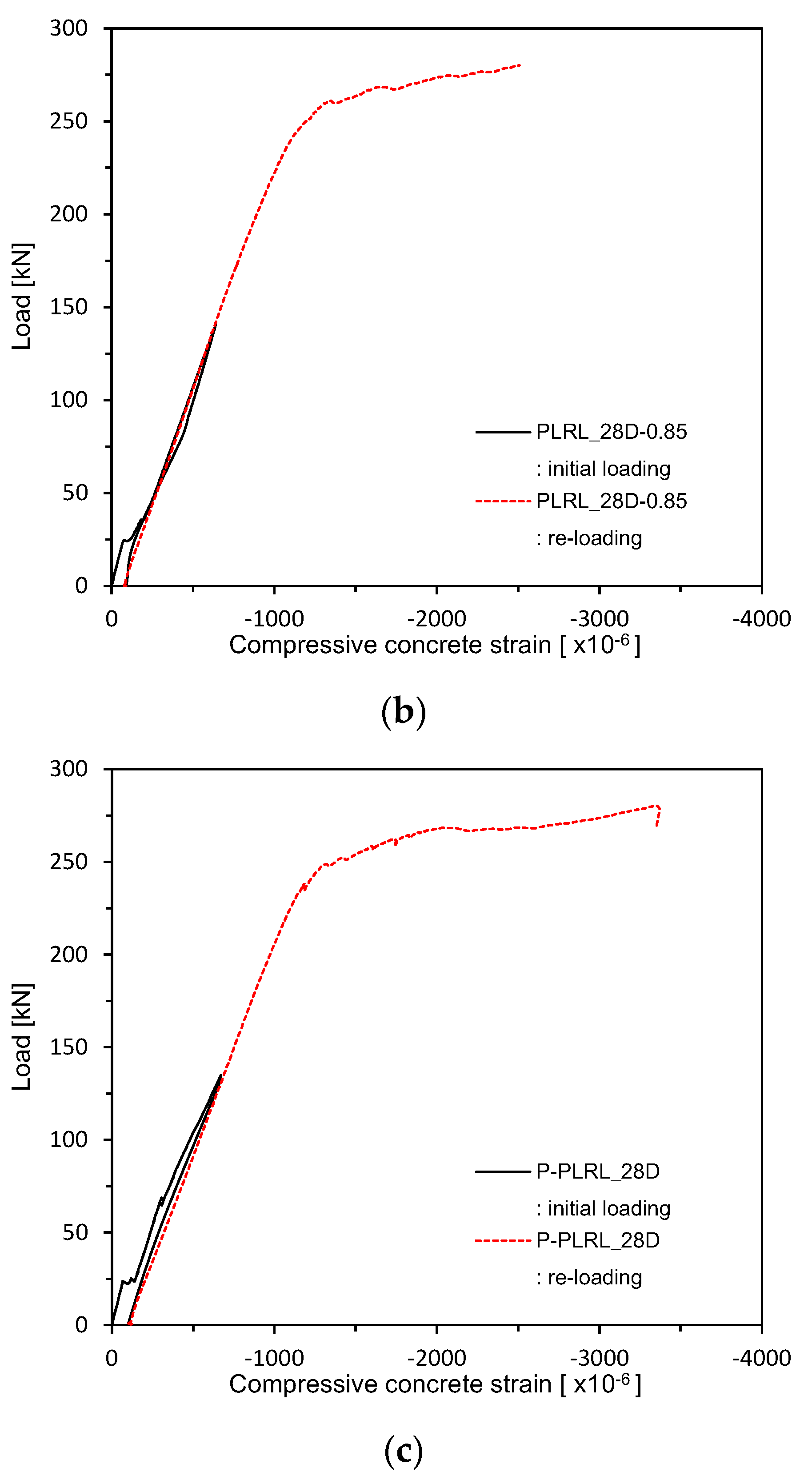
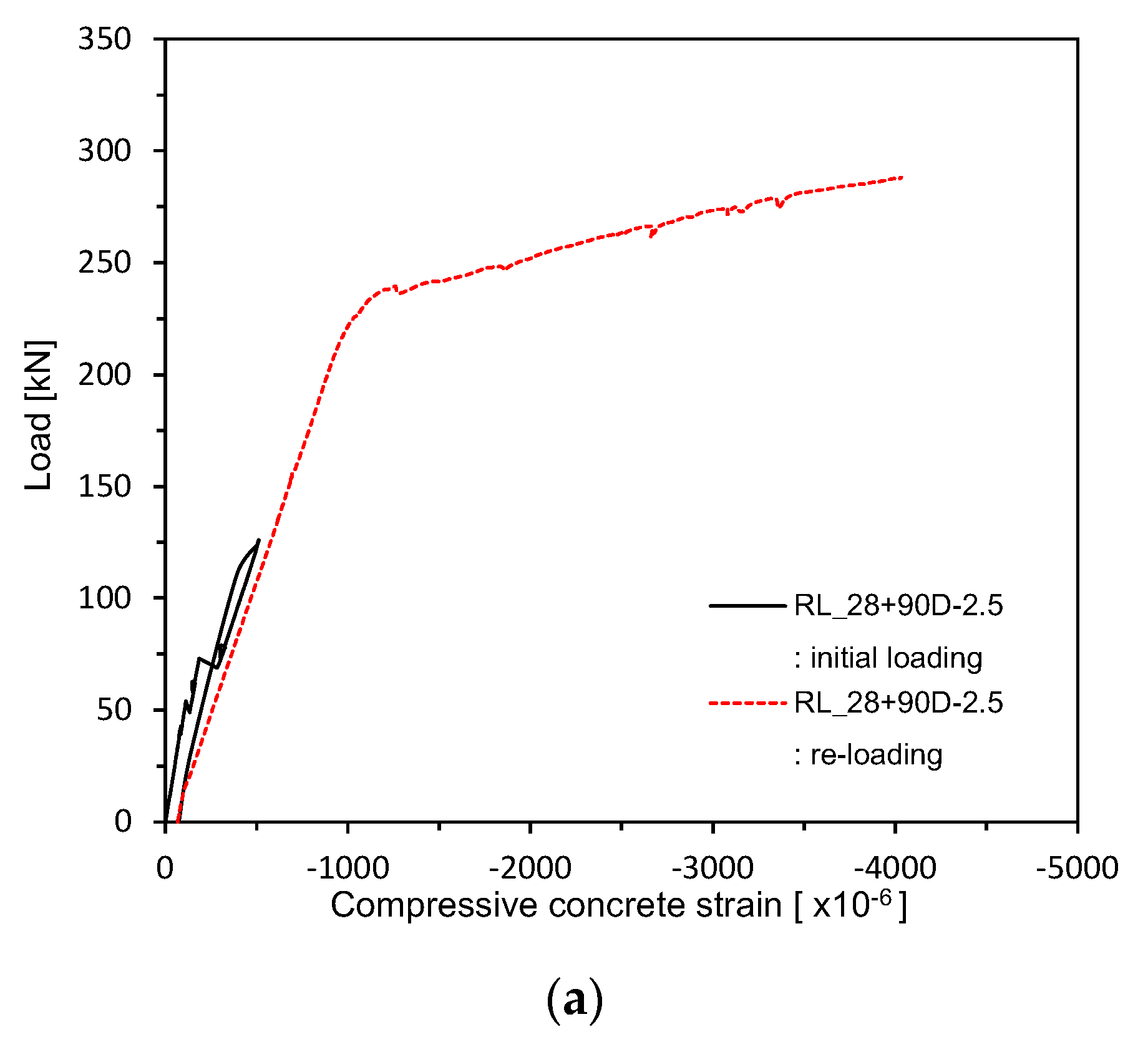
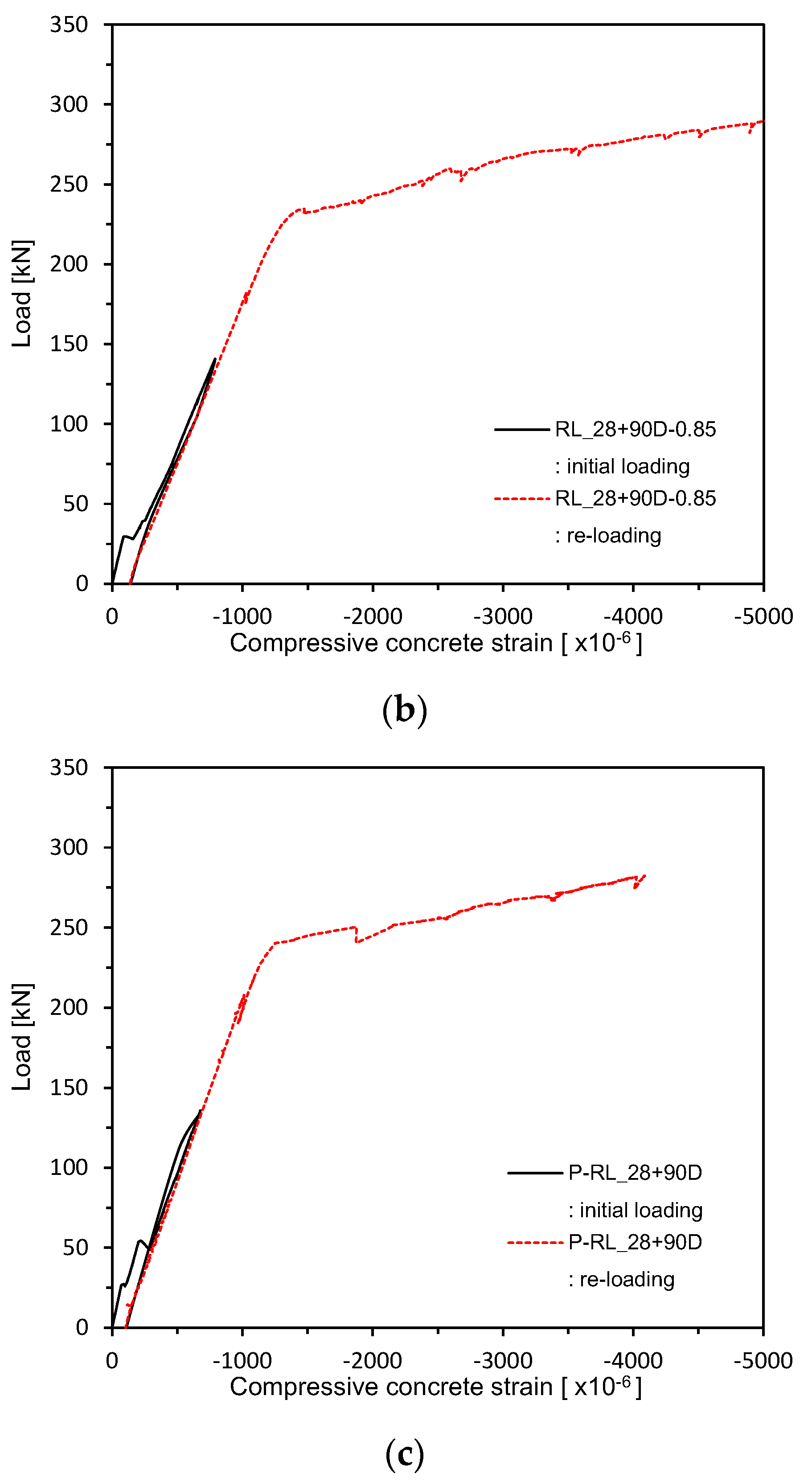

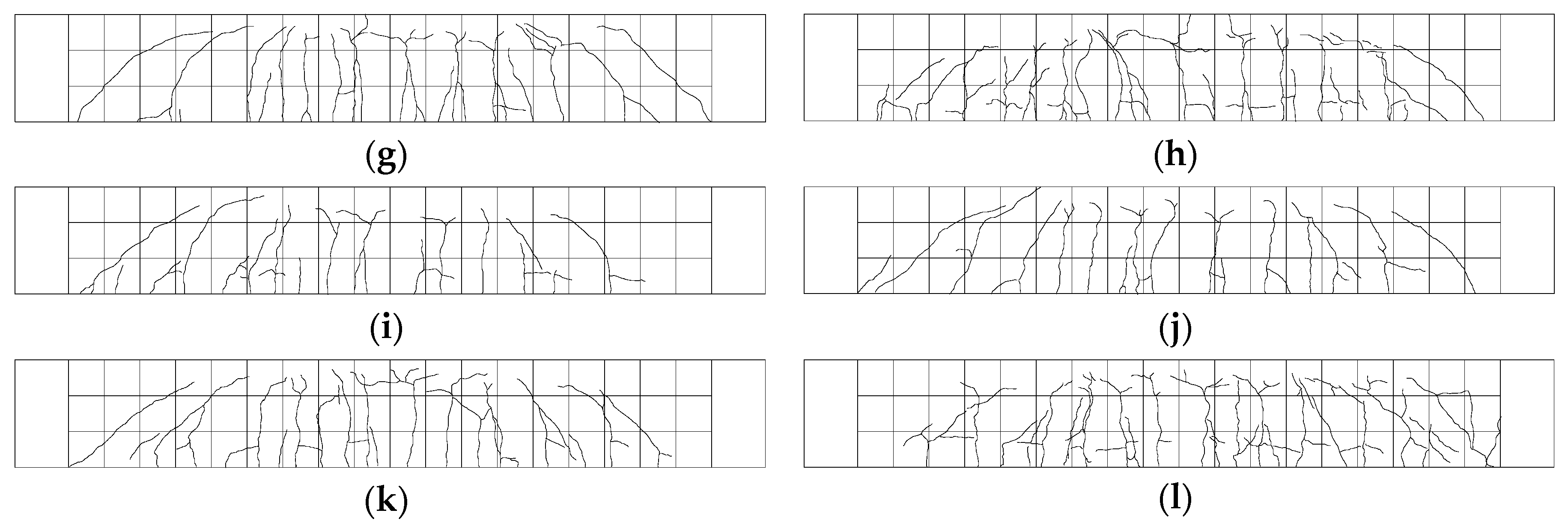
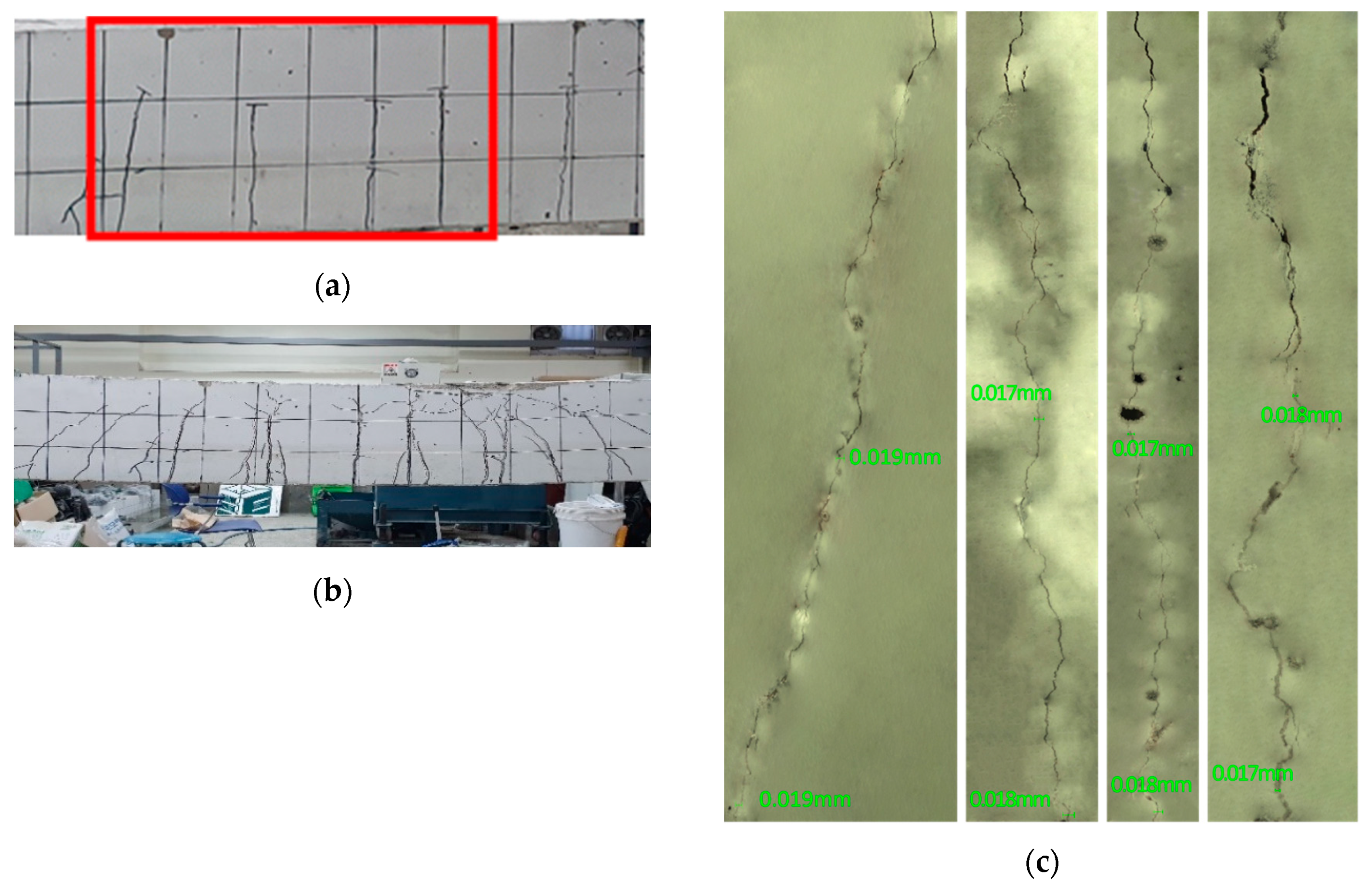

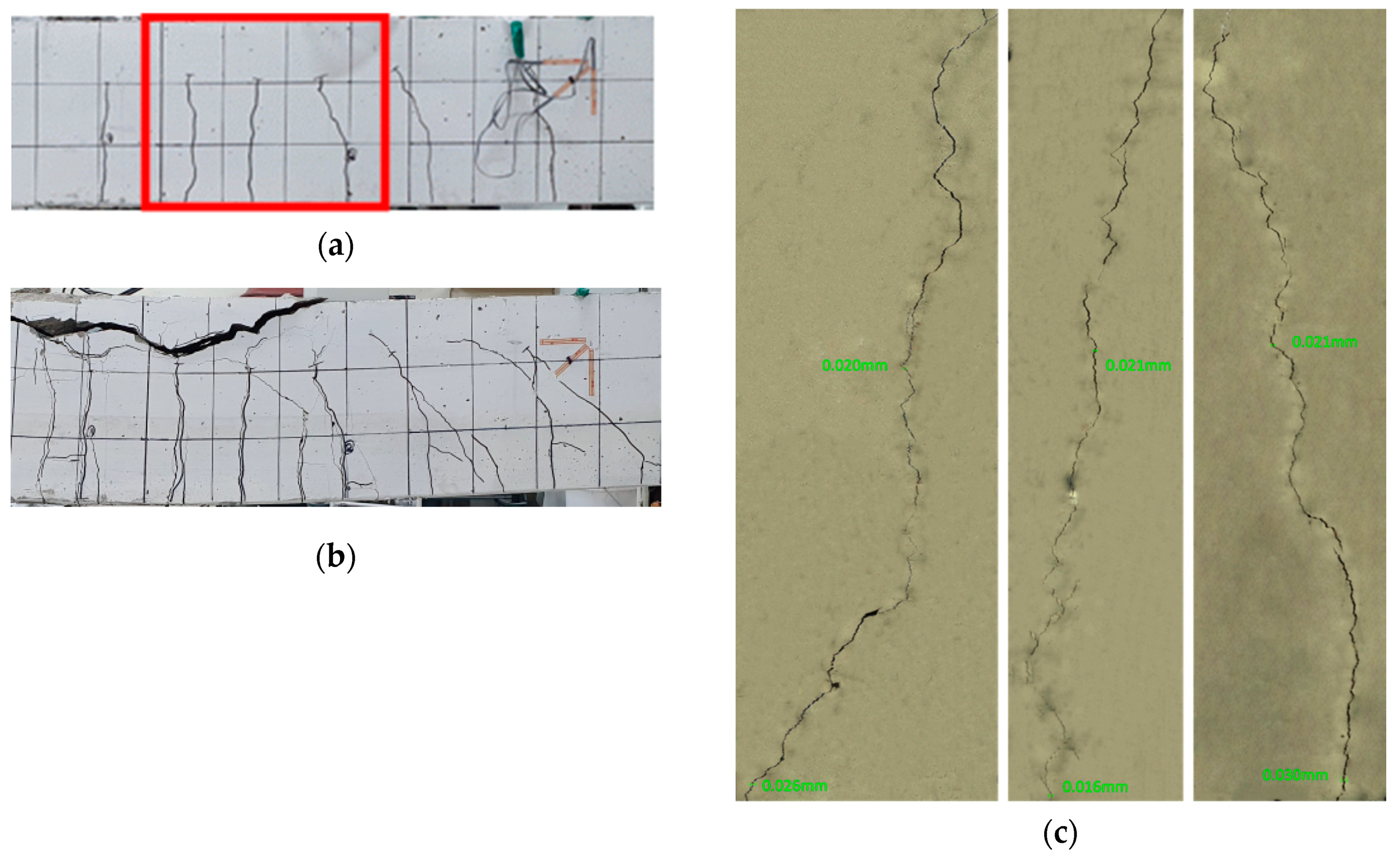
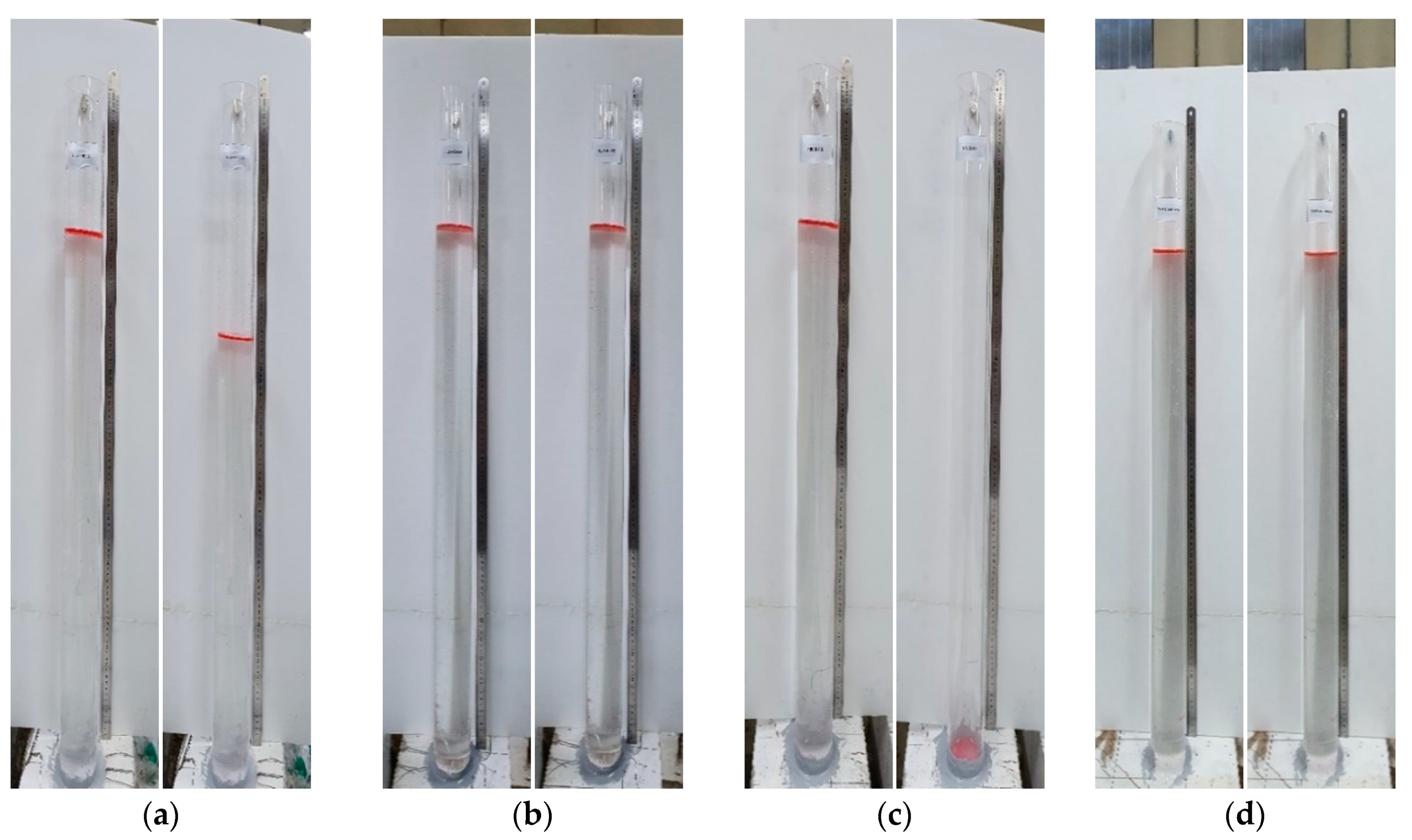
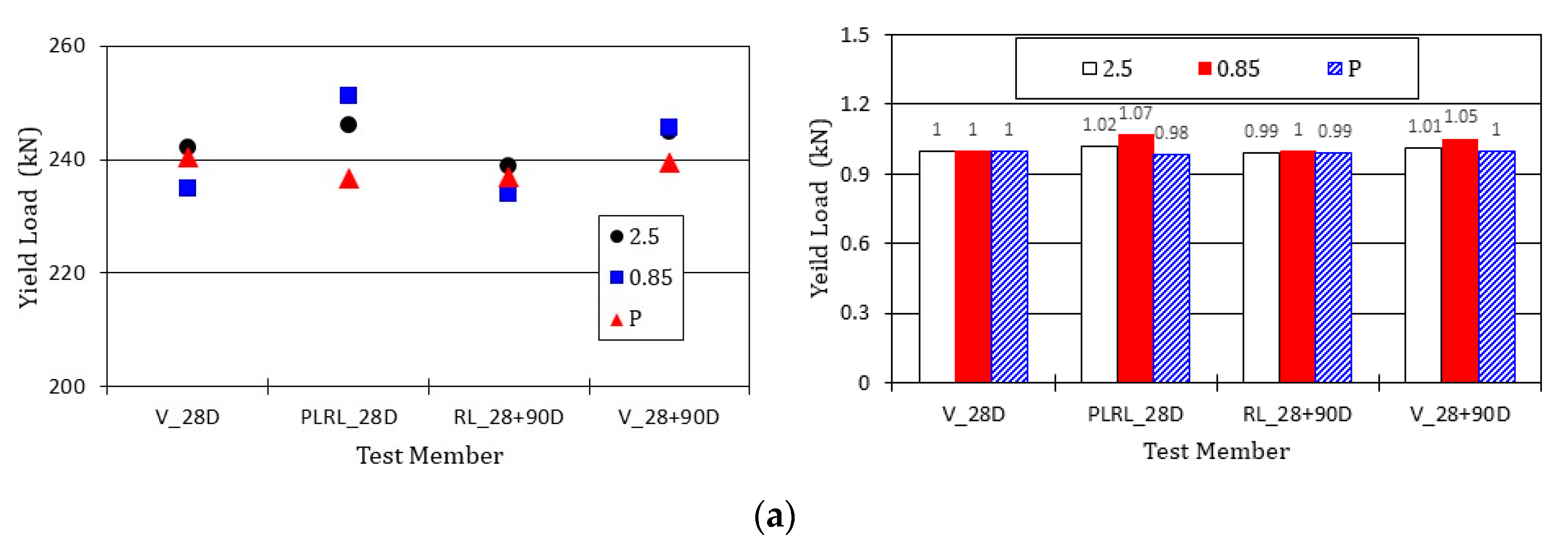

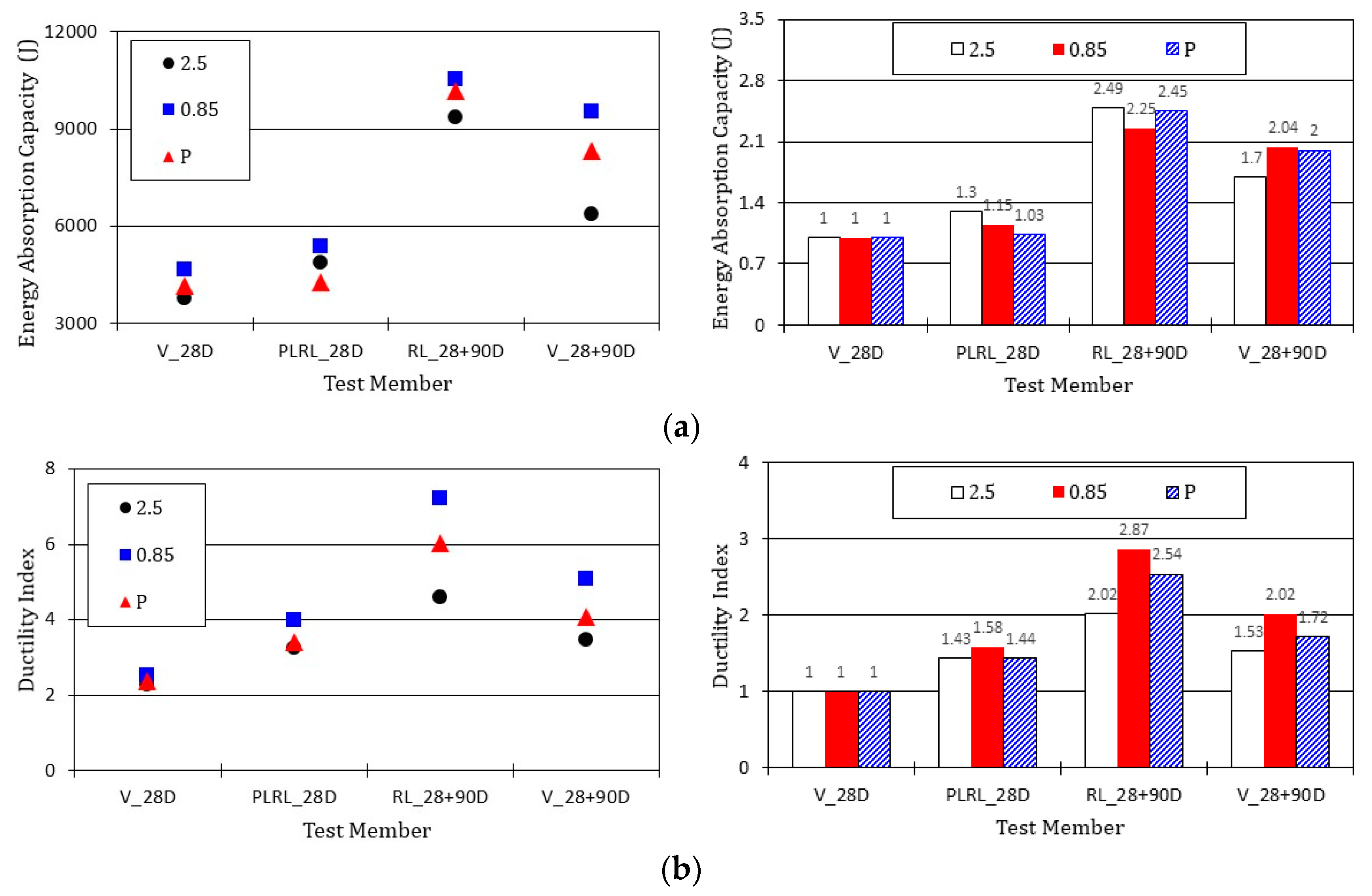
| Material | CaO | SiO2 | Al2O3 | Fe2O3 | MgO | K2O | Na2O | SO3 |
|---|---|---|---|---|---|---|---|---|
| GGBFS | 42.51 | 29.13 | 15.82 | 0.67 | 4.43 | 0.52 | 0.28 | 3.59 |
| Clinker | 64.34 | 22.87 | 4.96 | 2.94 | 1.28 | 0.82 | 0.23 | 0.44 |
| Series | Binder | Aggregate | |||||
|---|---|---|---|---|---|---|---|
| OPC | GGBFS | Na2SO4 | Anhydrite | Clinker Binder | Clinker Sand | Sand | |
| Plain | 690 | - | - | - | - | - | 1380 |
| 2.5 | 428 | 173 | 10 | 10 | 69 | 69 | 1311 |
| 0.85 | 428 | 173 | 10 | 10 | 138 | - | 1311 |
| Series | Water | OPC | GGBFS | Na2SO4 | Anhydrite | Clinker | Aggreg. | SP | |
|---|---|---|---|---|---|---|---|---|---|
| 0.85 | 2.5 | ||||||||
| Plain | 275 | 495 | 172 | 10 | - | - | - | 1375 | 9 |
| 2.5 | 276 | 428 | 173 | 10 | 10 | 69 | 69 | 1311 | 9 |
| 0.85 | 276 | 428 | 173 | 10 | 10 | 138 | - | 1311 | 9 |
| Designation | Clinker Particle Size | Curing Condition | Loading and Pre-Damage Status |
|---|---|---|---|
| V_28D-2.5 | 2.5 mm | 28 days of air-drying | Loading up to ultimate state at 28 days |
| PLRL_28D-2.5 | 28 days of air-drying | Pre-loading up to 50% of ultimate load at 28 days + loading up to ultimate state at 28 days | |
| RL_28 + 90D-2.5 | 28 days of air-drying followed by partial water curing for 90 days | Pre-loading up to 50% of ultimate load at 28 days + loading up to ultimate load 90 days after | |
| V_28 + 90D-2.5 | Air-drying until 28 + 90 days | Loading up to ultimate state after 28 + 90 days | |
| V_28D-0.85 | 0.85 mm | 28 days of air-drying | Loading up to ultimate state at 28 days |
| PLRL_28D-0.85 | 28 days of air-drying | Pre-loading up to 50% of ultimate load at 28 days + loading up to ultimate state at 28 days | |
| RL_28 + 90D-0.85 | 28 days of air-drying followed by partial water curing for 90 days | Pre-loading up to 50% of ultimate load at 28 days + loading up to ultimate load 90 days after | |
| V_28 + 90D-0.85 | Air-drying until 28 + 90 days | Loading up to ultimate state after 28 + 90 days | |
| P-V_28D | OPC | 28 days of air-drying | Loading up to ultimate state at 28 days |
| P-PLRL_28D | 28 days of air-drying | Pre-loading up to 50% of ultimate load at 28 days + loading up to ultimate state at 28 days | |
| P-RL_28 + 90D | 28 days of air-drying followed by partial water curing for 90 days | Pre-loading up to 50% of ultimate load at 28 days + loading up to ultimate load 90 days after | |
| P-V_28 + 90D | Air-drying until 28 + 90 days | Loading up to ultimate state after 28 + 90 days |
| Series | Compressive Strength | Slump Flow (mm) | |
|---|---|---|---|
| 7 Days (MPa) | 28 Days (MPa) | ||
| Plain | 38.32 (1.12) | 47.46 (1.48) | 203 (8.2) |
| 2.5 | 37.27 (0.89) | 48.92 (1.59) | 207 (8.0) |
| 0.85 | 37.89 (1.03) | 49.33 (1.56) | 208 (8.1) |
| Series | (mm) | Air | ||||
|---|---|---|---|---|---|---|
| 28 Days (MPa) | 28 + 90 Days (MPa) | 28 Days (MPa) | 28 + 90 Days (MPa) | (%) | ||
| Plain | 57.55 (2.01) | 59.65 (1.98) | 26,713 (1,219) | 29,453 (1,410) | 42.5 (2.10) | 7.5 |
| 2.5 | 60.79 (2.08) | 67.58 (2.11) | 21,670 (1,002) | 25,538 (987) | 44.2 (2.06) | 4.6 |
| 0.85 | 62.88 (2.14) | 63.63 (2.18) | 28,190 (1,145) | 29,087 (1,328) | 45.2 (1.97) | 8.2 |
| Series | Width of Failure Section (mm) | Height of Failure Section (mm) | (kN) | (MPa) | ||||
|---|---|---|---|---|---|---|---|---|
| 28 Days | 28 + 90 Days | 28 Days | 28 + 90 Days | 28 Days | 28 + 90 Days | 28 Days | 28 + 90 Days | |
| Plain | 99.8 | 100.0 | 101.0 | 98.8 | 16.0 (0.92) | 16.6 (1.01) | 7.1 (0.31) | 7.6 (0.18) |
| 2.5 | 101.7 | 100.0 | 100.0 | 100.0 | 13.8 (0.73) | 18.2 (1.12) | 6.1 (0.27) | 8.4 (0.31) |
| 0.85 | 98.0 | 100.0 | 100.5 | 100.0 | 17.6 (0.77) | 19.3 (1.09) | 8.0 (0.29) | 8.7 (0.28) |
| Test Members | Crack Load (kN) | Yield (kN, mm) | Ultimate (kN, mm) | Ultimate/Yield | Failure Pattern | |||
|---|---|---|---|---|---|---|---|---|
| Load | Displ. | Load | Displ. | Load | Displ. | |||
| V_28D-2.5 | 5.63 | 242.18 | 7.93 | 267.90 | 18.10 | 1.11 | 2.28 | Flexure |
| PLRL_28D-2.5 | 4.16 | 246.20 | 6.52 | 283.33 | 21.32 | 1.15 | 3.27 | Flexure |
| RL_28 + 90D-2.5 | 11.54 | 238.97 | 8.39 | 288.00 | 38.58 | 1.21 | 4.60 | Flexure |
| V_28 + 90D-2.5 | 9.96 | 245.02 | 7.48 | 281.01 | 26.02 | 1.15 | 3.48 | Flexure |
| V_28D-0.85 | 2.78 | 234.94 | 7.93 | 277.88 | 20.02 | 1.18 | 2.52 | Flexure |
| PLRL_28D-0.85 | 4.71 | 251.36 | 5.51 | 290.98 | 21.92 | 1.16 | 3.98 | Flexure |
| RL_28 + 90D-0.85 | 11.79 | 233.91 | 5.81 | 291.90 | 41.94 | 1.25 | 7.22 | Flexure |
| V_28 + 90D-0.85 | 9.42 | 245.59 | 7.28 | 289.55 | 37.02 | 1.18 | 5.09 | Flexure |
| P-V_28D | 6.17 | 240.44 | 8.52 | 268.29 | 20.23 | 1.12 | 2.37 | Flexure |
| P-PLRL_28D | 5.37 | 236.81 | 5.47 | 279.62 | 18.66 | 1.18 | 3.41 | Flexure |
| P-RL_28 + 90D | 11.32 | 237.08 | 6.94 | 282.60 | 41.78 | 1.19 | 6.02 | Flexure |
| P-V_28 + 90D | 5.92 | 239.54 | 8.26 | 278.75 | 33.72 | 1.16 | 4.08 | Flexure |
| Test Member | 2.5-Series | 0.85-Series | P-Series |
|---|---|---|---|
| V_28D | 0.0055 | 0.0065 | 0.0050 |
| V_28 + 90D | 0.0050 | 0.0075 | 0.0065 |
| PLRL_28D | 0.0075 | 0.0070 | 0.0065 |
| RL_28 + 90D | 0.0070 | 0.0060 | 0.0070 |
| Test Member | Initial Water Height (mm) | Final Water Height (mm) | Difference of Water Height (mm) |
|---|---|---|---|
| Healthy part | 800 | 798 | 2 |
| RL_28 + 90D-2.5 | 642 | 158 | |
| RL_28 + 90D-0.85 | 798 | 2 | |
| P-RL_28 + 90D | 0 | 800 |
© 2020 by the authors. Licensee MDPI, Basel, Switzerland. This article is an open access article distributed under the terms and conditions of the Creative Commons Attribution (CC BY) license (http://creativecommons.org/licenses/by/4.0/).
Share and Cite
Lee, K.-M.; Choi, Y.-C.; Park, B.; Choo, J.F.; Yoo, S.-W. Effect of Clinker Binder and Aggregates on Autogenous Healing in Post-Crack Flexural Behavior of Concrete Members. Materials 2020, 13, 4516. https://doi.org/10.3390/ma13204516
Lee K-M, Choi Y-C, Park B, Choo JF, Yoo S-W. Effect of Clinker Binder and Aggregates on Autogenous Healing in Post-Crack Flexural Behavior of Concrete Members. Materials. 2020; 13(20):4516. https://doi.org/10.3390/ma13204516
Chicago/Turabian StyleLee, Kwang-Myong, Young-Cheol Choi, Byoungsun Park, Jinkyo F. Choo, and Sung-Won Yoo. 2020. "Effect of Clinker Binder and Aggregates on Autogenous Healing in Post-Crack Flexural Behavior of Concrete Members" Materials 13, no. 20: 4516. https://doi.org/10.3390/ma13204516
APA StyleLee, K.-M., Choi, Y.-C., Park, B., Choo, J. F., & Yoo, S.-W. (2020). Effect of Clinker Binder and Aggregates on Autogenous Healing in Post-Crack Flexural Behavior of Concrete Members. Materials, 13(20), 4516. https://doi.org/10.3390/ma13204516





